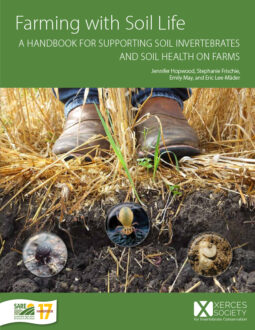INSECTS: CLASS INSECTA includes a great number of insect orders that dwell in the soil for all or a portion of their life cycle or that are involved in soil food webs, including all of the most diverse groups (e.g., beetles, flies, bees, wasps, ants, butterflies and moths). These insects are important predators, root feeders, modifiers of soil structure or decomposers.
BEETLES (COLEOPTERA) are insects with hardened forewings that cover their bodies. There are more than 370,000 species of beetles, making them one of the most diverse groups of organisms on the planet. Beetles contribute significantly to soil health through their roles as decomposers of plant material, carrion, dung and fungi, as predators of other soil animals, and as burrowers in the soil.
Fireflies
PHYLUM: Arthropoda » CLASS: Insecta » ORDER: Coleoptera » FAMILY: Lampyridae
SIZE: 0.2–0.78" (5–20 mm).
ECOLOGICAL ROLE: Fireflies are predators in soil systems.
DESCRIPTION: Adults have soft, leathery wing covers—typically black with red or pale-brown markings—and have light-producing segments near the end of their abdomen. Female fireflies have shorter wings and fewer luminous segments than males, and many species are wingless. The predatory larvae have dark, elongated bodies and strong sicklelike jaws.
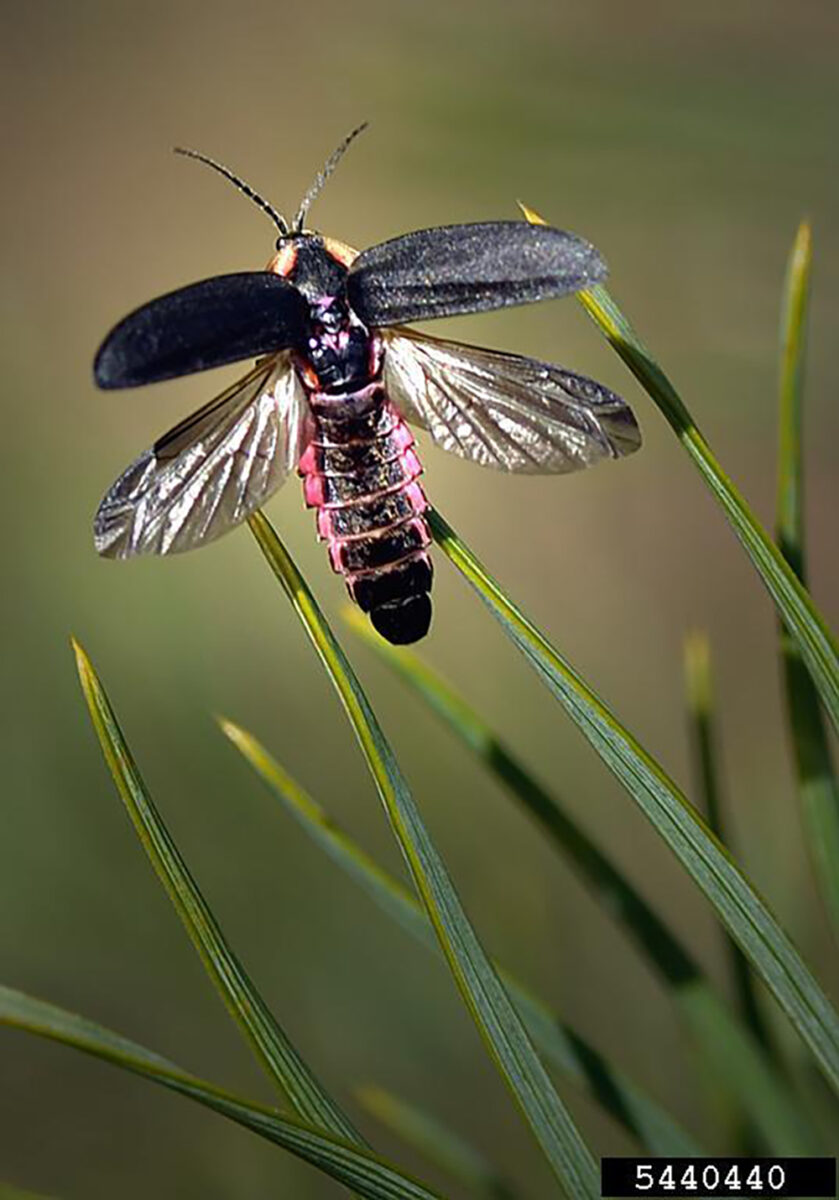
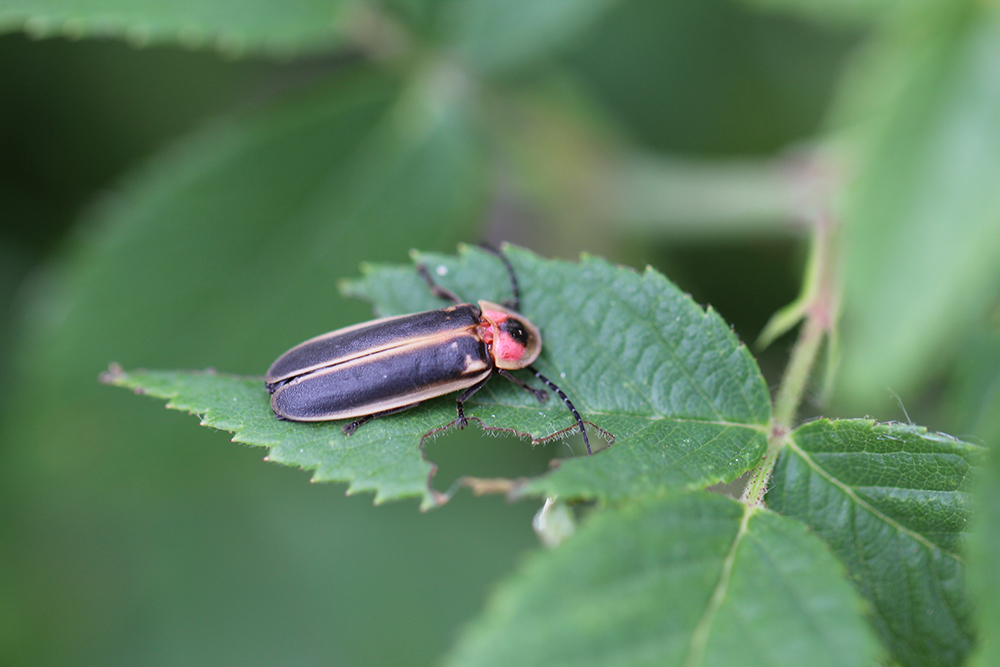
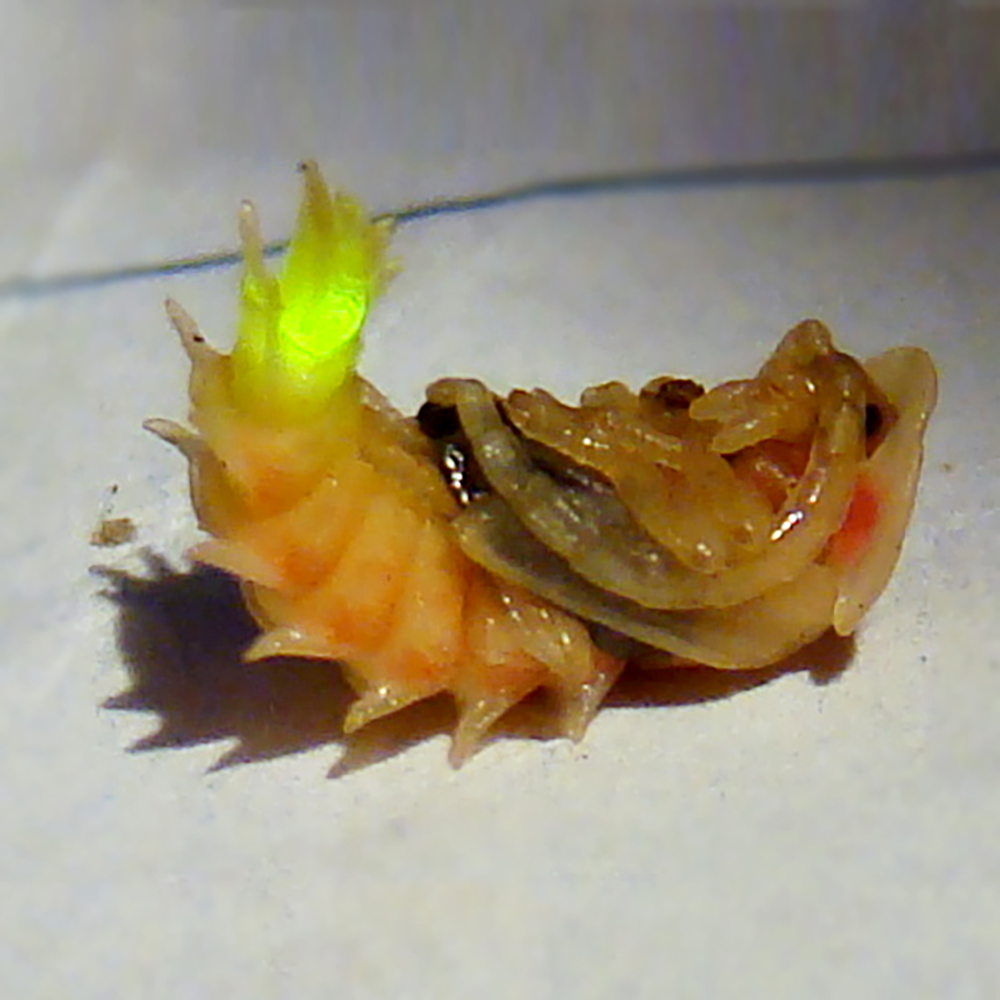
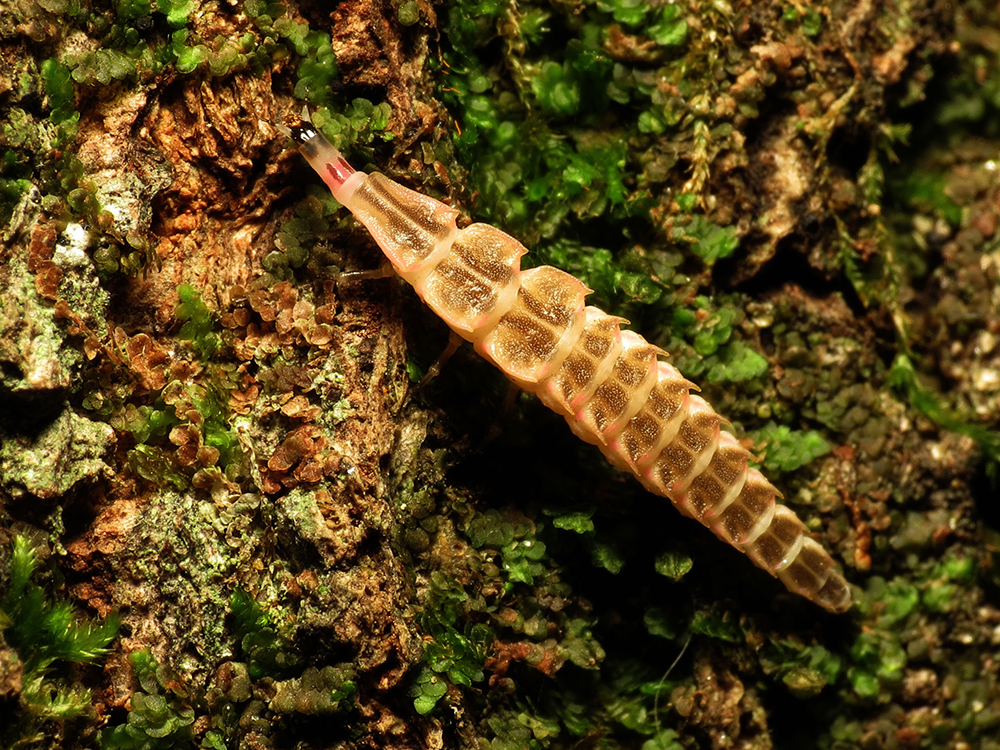
WHERE THEY ARE FOUND: Larvae reside under bark and in damp areas where prey is found. Tall grasses in field edges or yards can shelter adults, which can also be found on flowers with open floral structures.
WHAT THEY EAT: Firefly larvae hunt snails, slugs, earthworms, caterpillars and other soft-bodied insects in leaf litter and soil. Some adults are predatory or feed on nectar and pollen.
LIFE CYCLE: Fireflies may lay eggs singly or in clusters, just under soil or among grass roots. There are one to two generations a year, and larvae overwinter under bark or by burrowing into the soil. Fireflies pupate in soil, under rocks, or in leaf litter.
APPROX. NUMBER OF KNOWN SPECIES: 2,200 worldwide (170 in the United States).
RELATIVE ABUNDANCE: Fireflies are becoming increasingly rare as soils are more developed and disturbed.
NOTES OF INTEREST:
- Larvae are referred to by some as glow-worms because they are also luminescent; eggs of some species also glow. Their glowing warns predators that they are not tasty to eat.
- Using their luminescent organs to flash, fireflies attract mates in courtship rituals. Different species have distinct flashing patterns, to avoid confusion.
- Females of some species mimic the flash pattern of other firefly species to lure males, which they then eat.
- Firefly larvae are good hunters, searching soil burrows or tracking slug or snail trails to find their prey.
Soldier beetles
PHYLUM: Arthropoda » CLASS: Insecta » ORDER: Coleoptera » FAMILY: Cantharidae
SIZE: 0.04–0.7" (1–18 mm).
ECOLOGICAL ROLE: Soldier beetle larvae are predators in soil systems. Above ground, adults contribute to pollination.
DESCRIPTION: Adults are soft bodied with leathery wing covers, and they have black, brown, yellow or orange coloration. They resemble fireflies without light-emitting segments. They have glands at the end of their abdomen that secret defensive chemicals. Larvae are dark colored with elongated, flattened bodies that help them move with ease through soil and leaf litter while hunting with their sickle-shaped jaws.
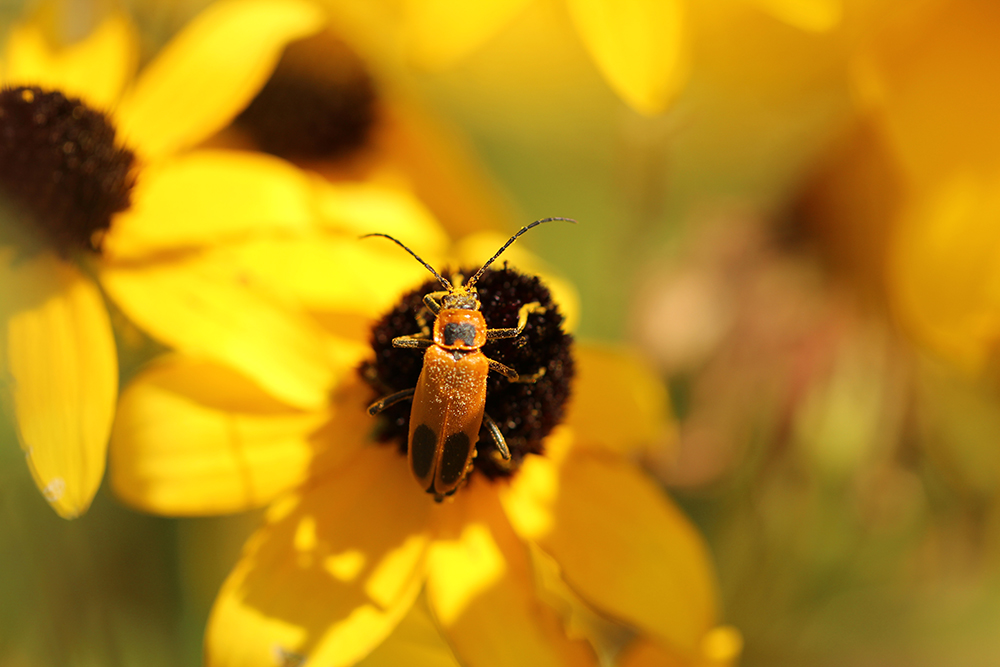
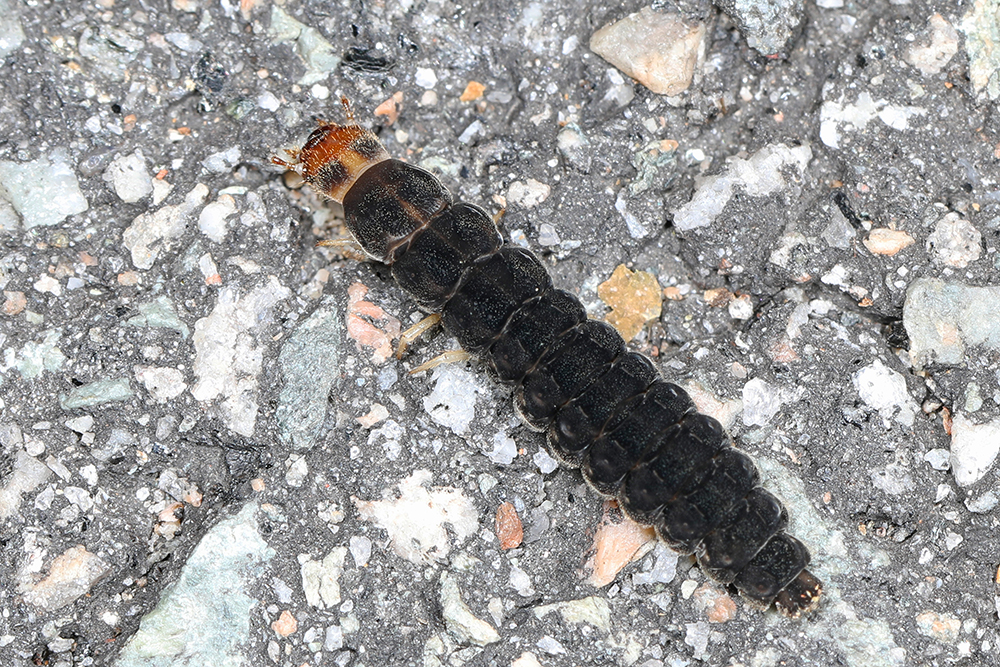
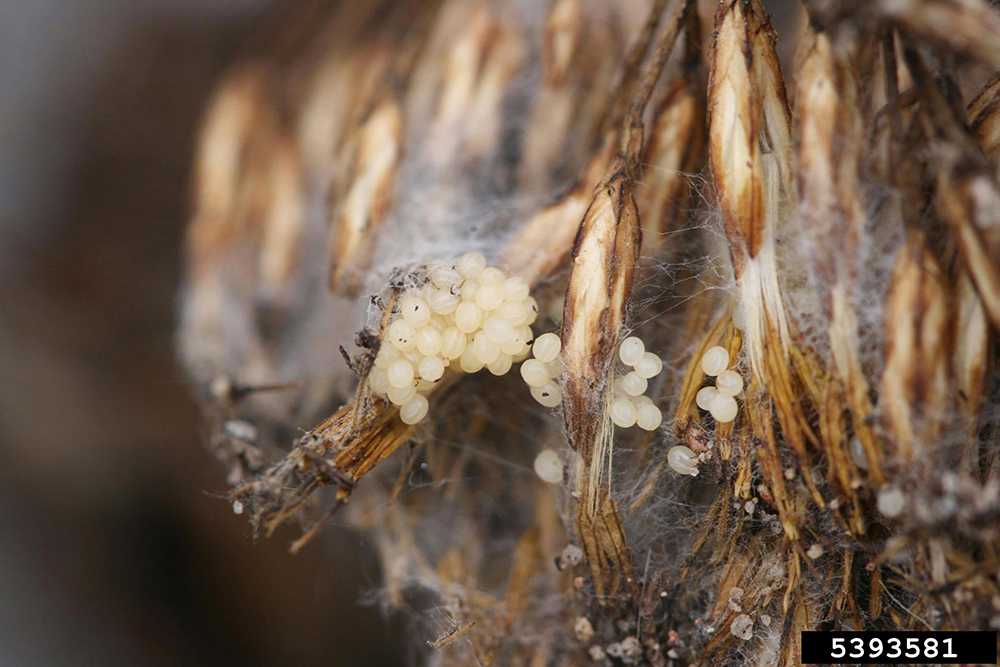
WHERE THEY ARE FOUND: Adults are predominantly found on flowers or leaves, while larvae live in the upper soil layer, in litter or under stones.
WHAT THEY EAT: Larvae and some adults eat insect eggs and larvae, aphids, snails and slugs. Adults also consume pollen and nectar.
LIFE CYCLE: Soldier beetles lay eggs in moist soil or in leaf litter, having one or two generations a year. Larvae hunt for insects in loose soil and leaf litter, and under rocks, debris or bark. Larvae overwinter in leaf litter, and pupation occurs just below the soil surface.
APPROX. NUMBER OF KNOWN SPECIES: 5,100 worldwide (470 in North America).
RELATIVE ABUNDANCE: Adults can congregate on flowers.
NOTES OF INTEREST:
- Soldier beetle larvae are coated with dense, short hairs that resemble velvet. These hairs are dark brown to purple, though the coats of species that eat aphids are pink.
- Adult soldier beetles can transfer pollen effectively. For example, Chauliognathus pensylvanicus can pollinate goldenrod (Solidago spp.).
- On-farm habitat can support adult soldier beetles. Reducing tillage and soil fumigants can support larvae. There is some evidence to suggest that larvae prefer areas with higher plant cover and humidity rather than bare ground, so areas of constant plant cover, such as those planted with cover crops or permanent plantings, may benefit larvae and their migration to nearby crops.
Soft-winged flower beetles
PHYLUM: Arthropoda » CLASS: Insecta » ORDER: Coleoptera » FAMILY: Melyridae
SIZE: 0.08–0.4" (2–10 mm).
ECOLOGICAL ROLE: The larvae of soft-winged flower beetles are predators in soil food webs.
DESCRIPTION: These small beetles have soft wing covers and an elongate, slightly ovular body that is brightly colored.
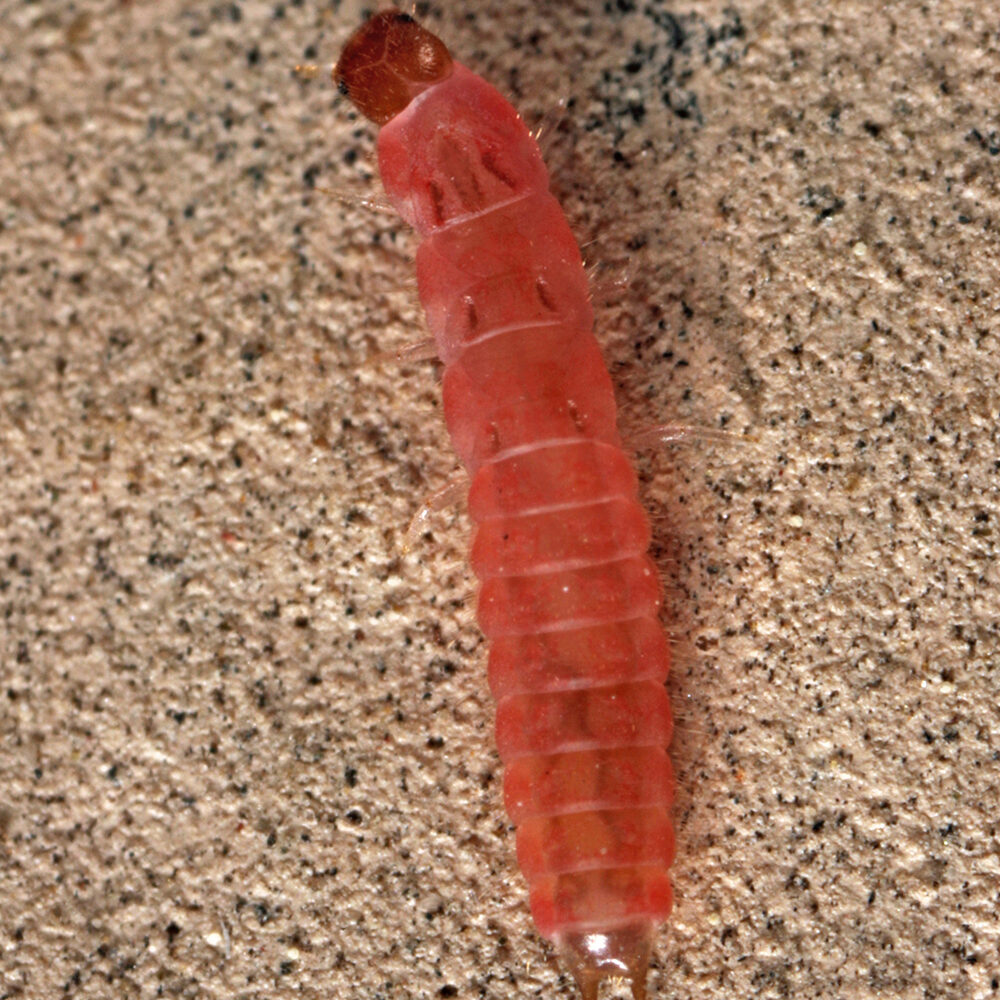
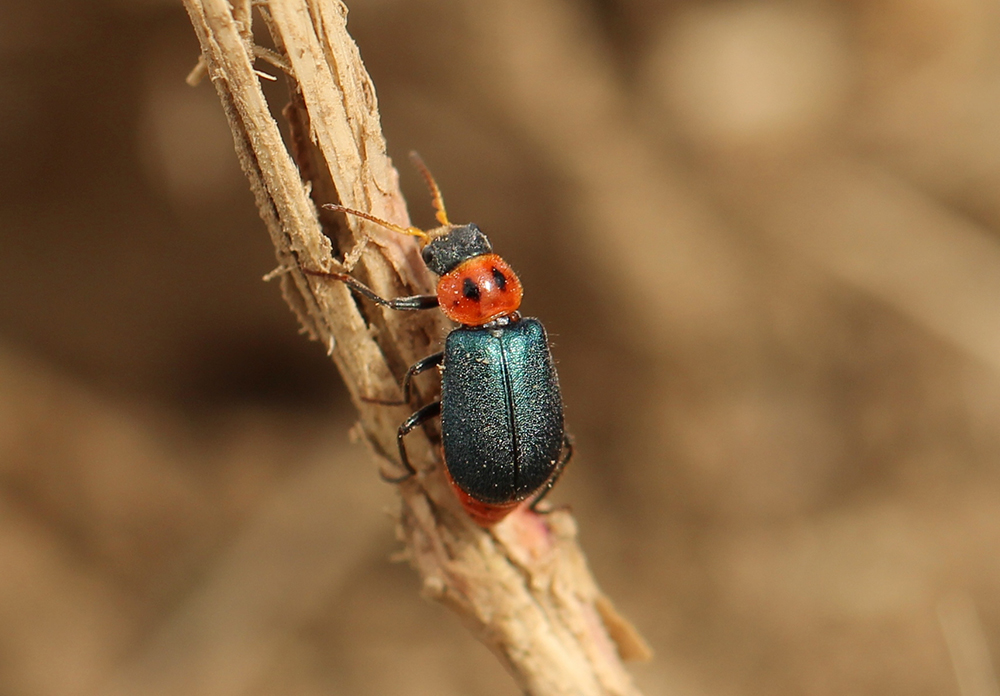
WHERE THEY ARE FOUND: Larvae are common in soil, in leaf litter or under bark. Adults are frequently found on flowers, where they feed on other insects and pollen.
WHAT THEY EAT: Larvae prey on other invertebrates; adults eat insect eggs, pollen, or nectar.
LIFE CYCLE: Soft-winged flower beetles lay eggs in clusters in leaf litter, on the soil surface, or under bark. It is suspected that the beetles overwinter as eggs, larvae or adults.
APPROX. NUMBER OF KNOWN SPECIES: 6,000 worldwide (520 in North America).
RELATIVE ABUNDANCE: Data unavailable.
NOTES OF INTEREST:
- Caterpillars, thrips, stink bug eggs, aphids and spider mites are all prey for adult soft-winged flower beetles. Soft-winged flower beetles in the genus Collops are common predators of pests in cotton, sorghum and alfalfa.
Net-winged beetles
PHYLUM: Arthropoda » CLASS: Insecta » ORDER: Coleoptera » FAMILY: Lycidae
SIZE: 0.2–0.7" (5–18 mm).
ECOLOGICAL ROLE: In soil systems, net-winged beetles are decomposers and may also be predators.
DESCRIPTION: Net-winged beetles have soft wings and resemble fireflies and soldier beetles. These beetles have raised edges running the length of their wing covers, have serrated antennae, and often have bright-orange or red color patterns on their body. Females are larger than males. Larvae look like they have armored plates, and their legs are well developed.
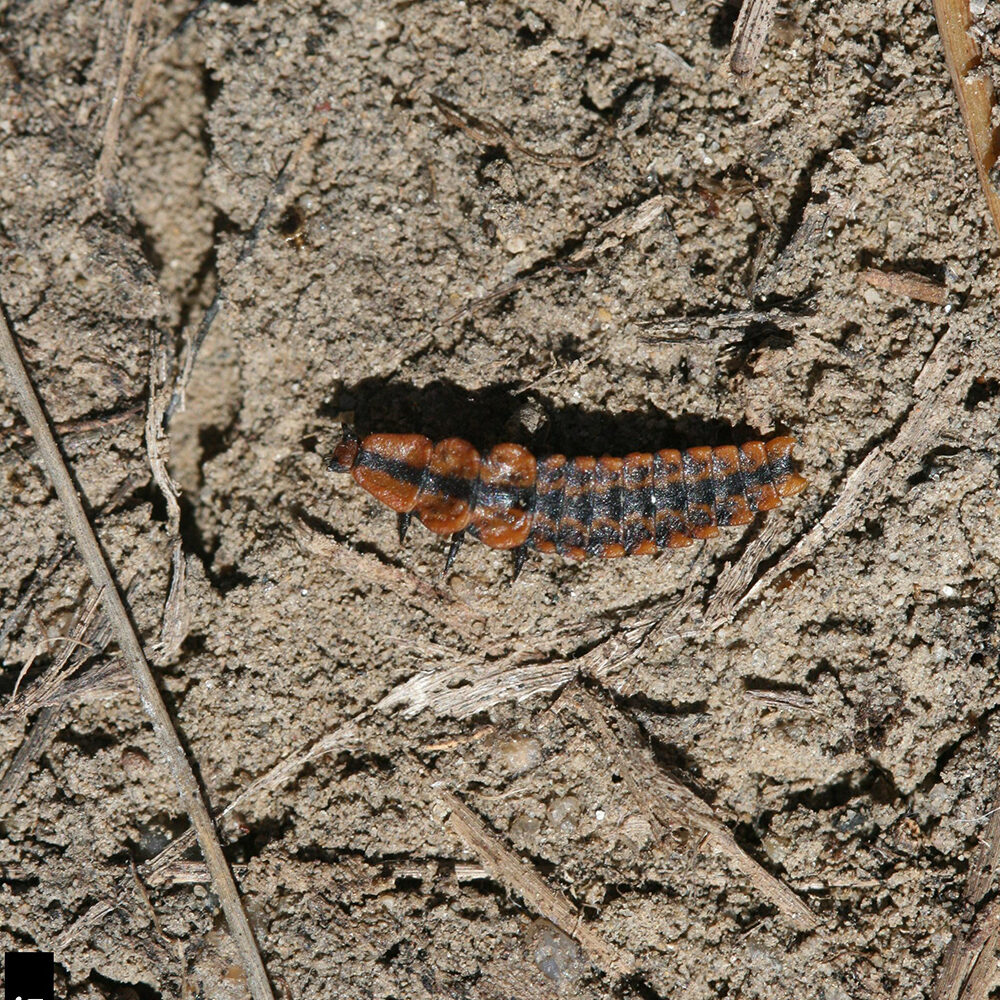
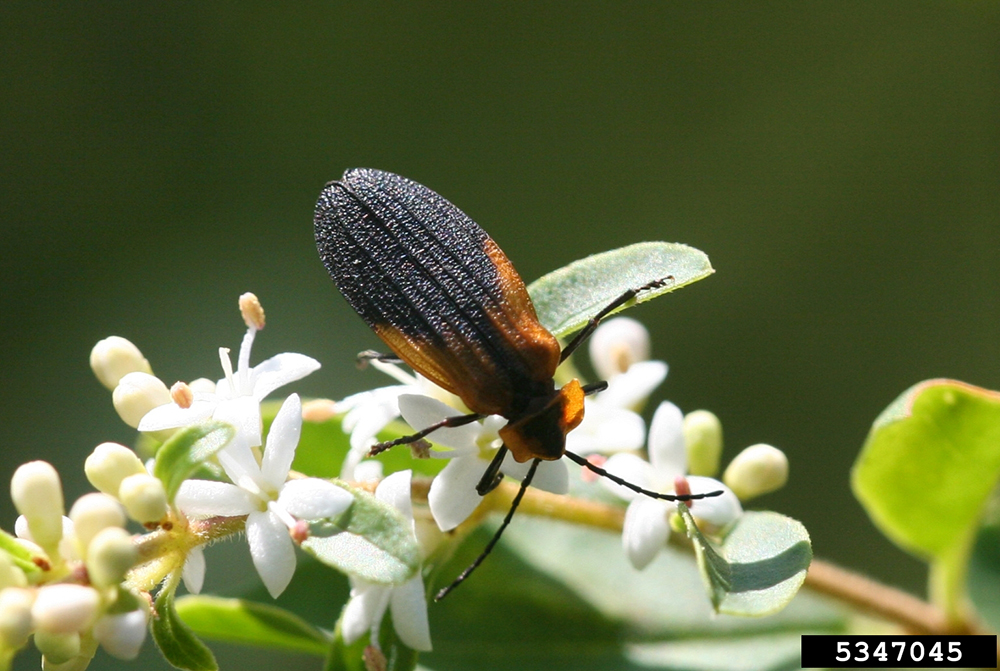
WHERE THEY ARE FOUND: Larvae occur on fungi, in rotting logs, under bark or in leaf litter. Adults can be seen on flowers.
WHAT THEY EAT: Adult net-winged beetles consume nectar. Larvae feed on fungi and the juices of decaying plant materials but have also been reported to prey on small insects.
LIFE CYCLE: Net-winged beetles deposit eggs in soil or decaying wood. Larvae and pupae may aggregate.
APPROX. NUMBER OF KNOWN SPECIES: 4,600 worldwide (80 in North America).
RELATIVE ABUNDANCE: Data unavailable.
NOTES OF INTEREST:
- Net-winged beetles are unpalatable to predators due to their consumption of toxic chemicals. They advertise their toxicity to birds and other predators through their bright body colors.
- Net-winged beetles will use a defensive strategy called reflex bleeding in which they exude stinky substances to deter predators.
- Some tiger moths, in the family Arctiidae, mimic the color patterns of these distasteful beetles, as do beetles in other beetle families.
Rove beetles
PHYLUM: Arthropoda » CLASS: Insecta » ORDER: Coleoptera » FAMILY: Staphylinidae
SIZE: 0.03–1" (0.7–25 mm).
ECOLOGICAL ROLE: Rove beetles are important predators of soil life, contributing to the decomposition of plant and animal matter and some mixing of soil. They can also contribute to crop pest control.
DESCRIPTION: Rove beetles are black or brown in color with elongated, slender bodies and short wing covers. Species with shortest wing covers are those that spend the most time in the soil. Adults vary in size depending on species. Rove beetles are quick runners and fliers, and many curl the tip of their abdomen slightly upward as they run or when disturbed by potential predators. Larvae have elongated bodies and large, sickle-shaped jaws.
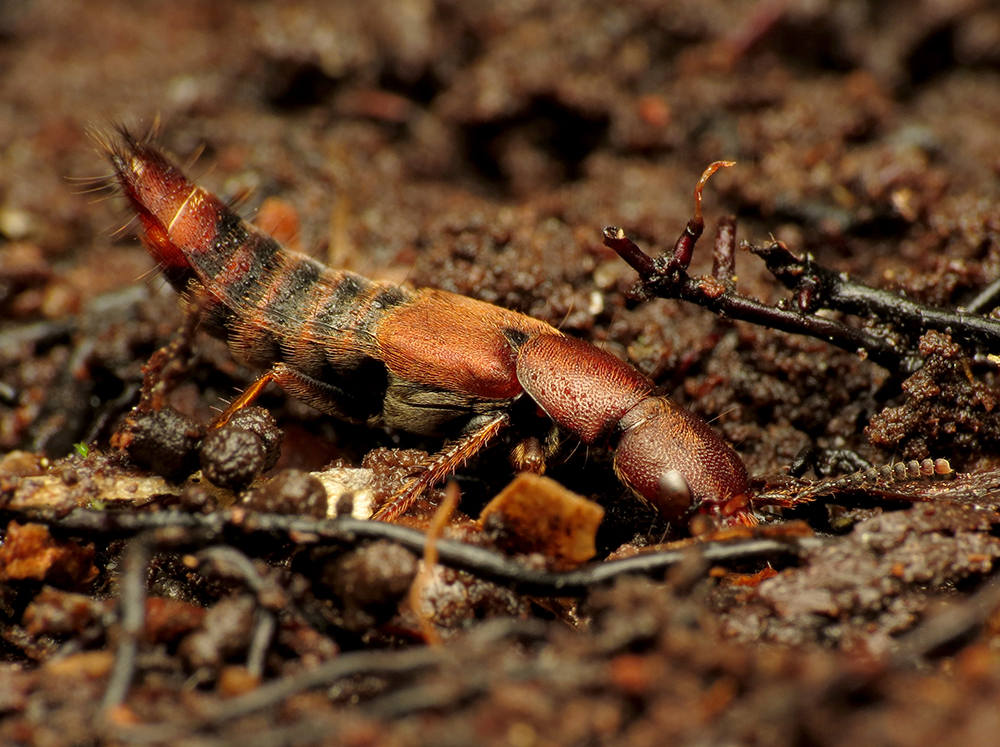
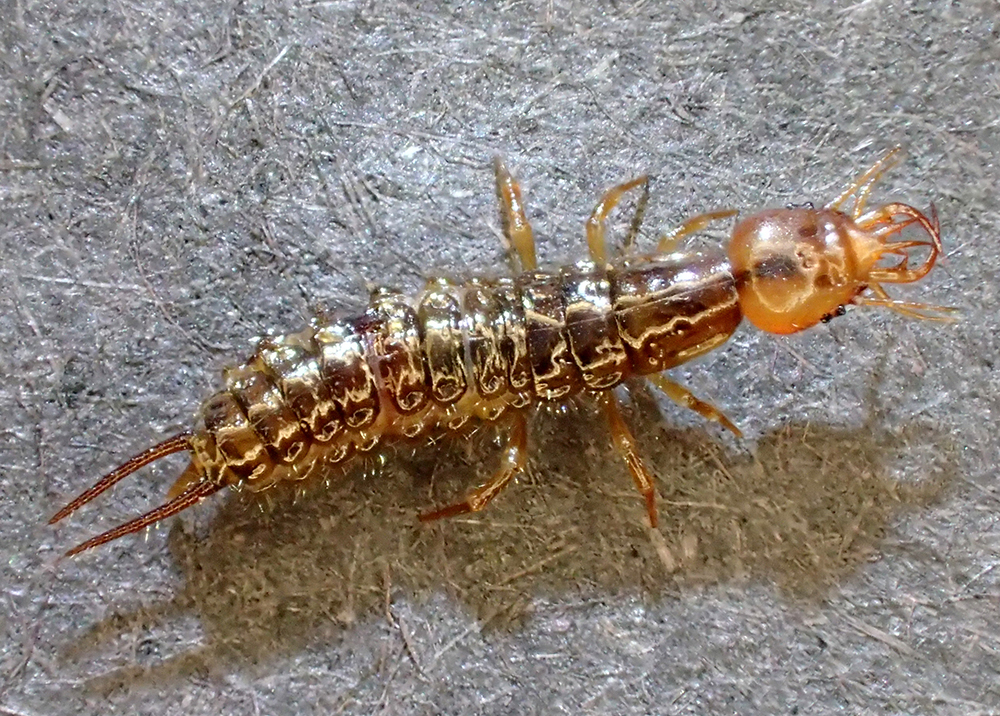
WHERE THEY ARE FOUND: Both larvae and adults are found in soil (primarily in upper layers, but some live in the deeper layers), mulch, leaf litter, fungi, or nests of ants, termites, mammals or birds.
WHAT THEY EAT: Larvae and adults eat insect eggs and small larvae, slugs and mites, and some also eat dead plant or animal matter.
LIFE CYCLE: Rove beetles lay eggs on leaves or under leaf litter. Pupae or adults overwinter under bark, and larvae overwinter under vegetation. Rove beetles may have one or multiple generations per year (it varies with species).
APPROX. NUMBER OF KNOWN SPECIES: 56,000 worldwide (4,400 in North America).
RELATIVE ABUNDANCE: Rove beetles can be very abundant, and this group has the most species of any beetle family.
NOTES OF INTEREST:
- This group includes the short-winged mold beetles, also known as ant-loving beetles (Pselaphinae), most of which are predators of small arthropods such as dwarf millipedes, mites, springtails and small worms rather than fungivores (as might be assumed from their common name).
- Some species of rove beetles are marine insects, living in sandy burrows in the intertidal zone of coastal areas. Female rove beetles of these species maintain a narrow burrow entrance to keep water out of the burrow during high tide.
- Conservation strategies for rove beetles include the creation of beetle banks (banked areas within fields planted with dense bunchgrasses) and wildflower field borders, limiting tillage and soil fumigants, and staggering harvest times of perennial forage crops such as alfalfa or clover.
Ground beetles
PHYLUM: Arthropoda » CLASS: Insecta » ORDER: Coleoptera » FAMILY: Carabidae
SIZE: 0.12–1.2" (3–30 mm).
ECOLOGICAL ROLE: Ground beetles fit into soil food webs in several ways. Ground beetles are predators as larvae and adults, and in agricultural systems they are important contributors to the control of crop pests. Some species will also eat detritus, fungi and plant seeds.
DESCRIPTION: Ground beetle larvae are cream to brown in color and have a round head, hooked jaws, long legs and bristly posterior projections. Adult ground beetles range in size from small to large and have threadlike antennae; prominent eyes; a head narrower than their thorax; an extended, oval abdomen; and ridged wing covers. Adults’ coloration is dark and shiny, usually black or brown, with some species having green, blue or purple iridescence. On farms, ground beetles prey on crop pests and consume weed seeds.
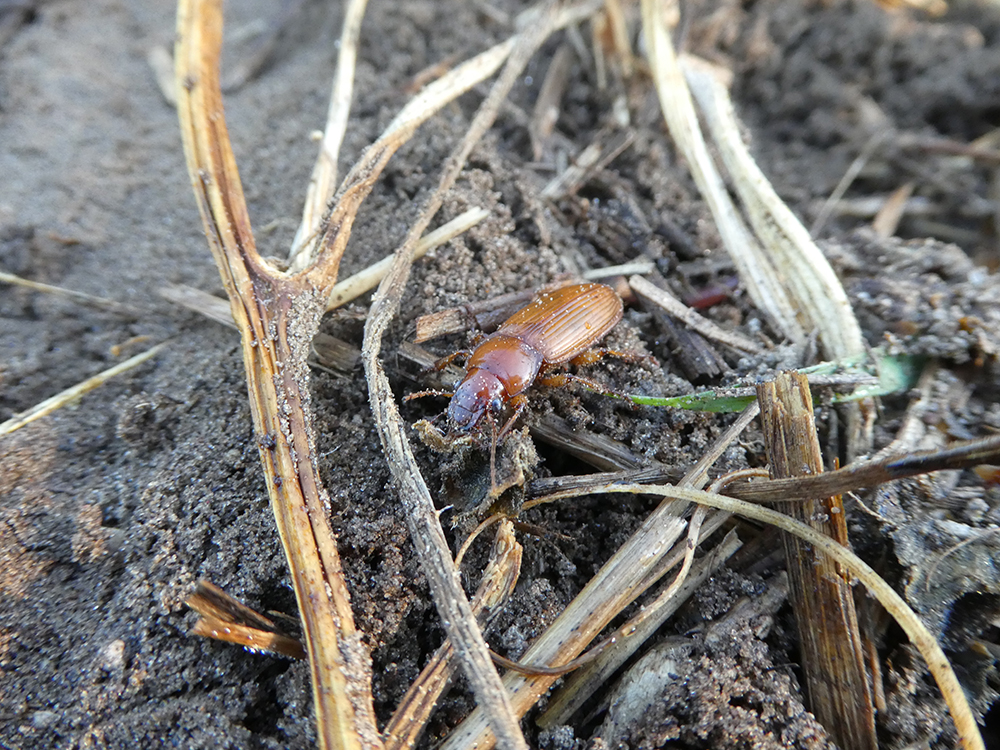
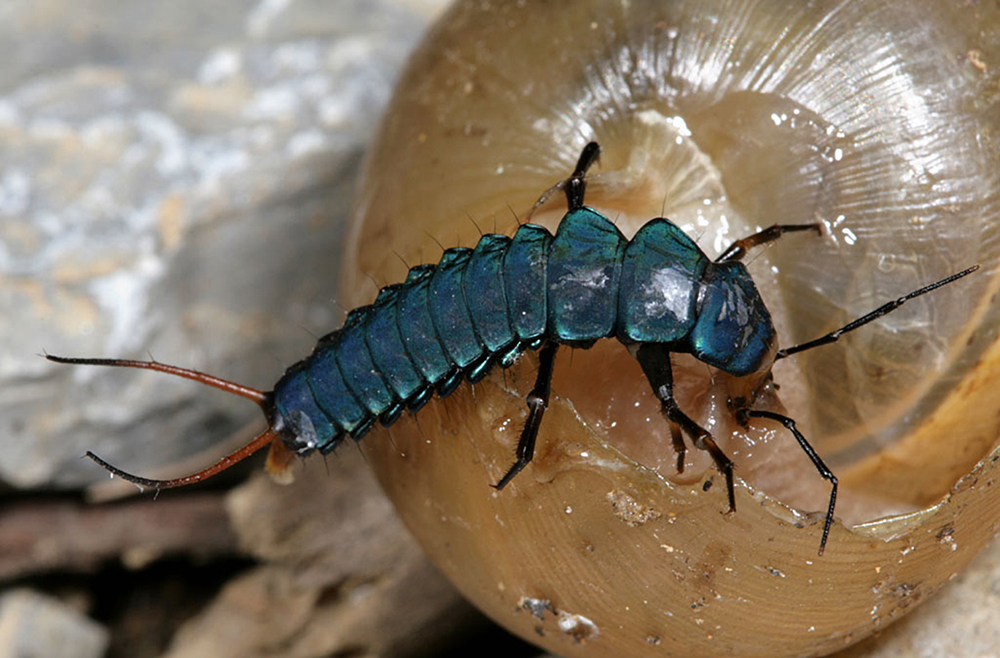
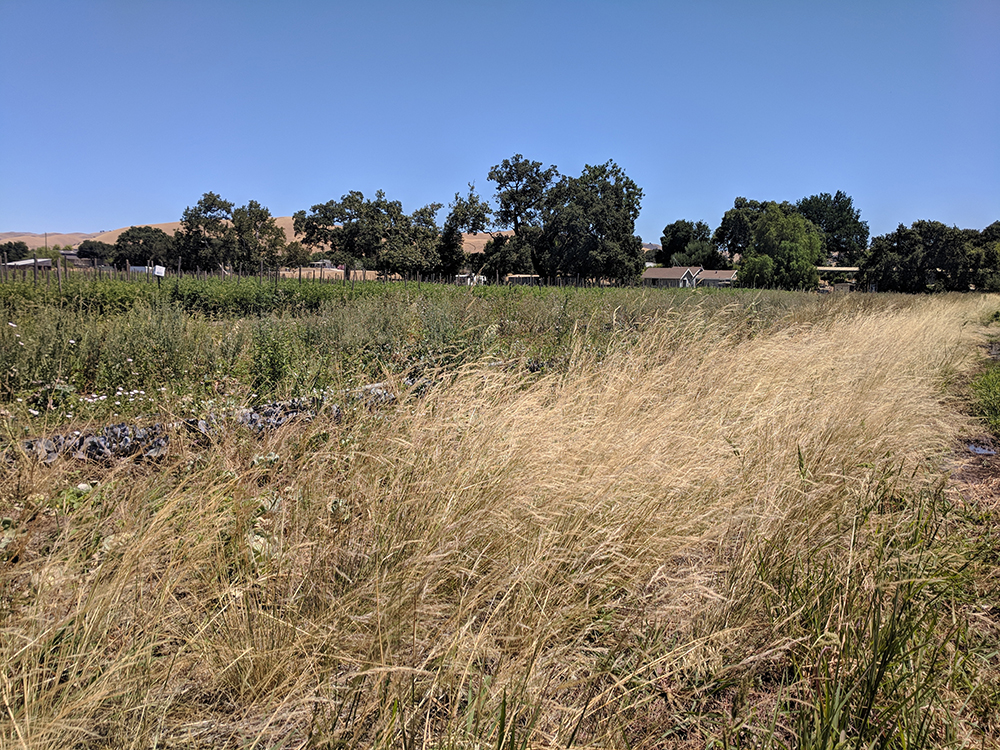
WHERE THEY ARE FOUND: Ground beetles can be found under debris, stones and logs; in soil cracks and leaf litter; and on the soil surface or vegetation. Larvae most often live in soil, burrows and leaf litter, or on the surface.
WHAT THEY EAT: Larvae and adults eat insects—including caterpillars, grasshoppers, beetles, aphids, and flies—as well as snails and slugs. Most ground beetles feed nocturnally, though some species are active during the day. Adults tend to feed at the soil surface or on vegetation. Predaceous larvae usually feed under the soil surface on rootworms, caterpillars and other soft- bodied insects. The larvae and adults of some species of ground beetles are omnivorous and will also eat carrion or fungi, while others feed primarily on seeds of several common weeds.
LIFE CYCLE: Ground beetles lay eggs singly or in small batches in crevices or, more frequently, in the soil; females of some species may guard their brood. They produce one generation a year, with adults living up to four years.
APPROX. NUMBER OF KNOWN SPECIES: 34,000 worldwide (2,500 in North America).
RELATIVE ABUNDANCE: Data unavailable.
NOTES OF INTEREST:
- Ground beetles seize their prey using their mandibles, and then they cover their prey with digestive juices before eventually ingesting them.
- Ground beetle communities can be associated with plant communities.
- Beetle banks—earthen ridges within fields planted with bunchgrasses—can provide important overwintering habitat for ground beetles. Avoid excessive tillage or burning of crop residue, as these practices can impact multiple life stages of these beetles and reduce populations quickly. Weed seed predators are more often found in fields with surface residue rather than bare, fallow fields.
- A classic British study comparing insecticide-treated and untreated fields found that cabbage fields treated with insecticide had greater crop damage from root maggots (flies in the family Anthomyiidae) because more than 30 species of predatory ground beetles had been killed.
- Both larvae and adult ground beetles can eat up to 2.5× their body weight in prey per day. The average daily food consumption is 0.875 grams for a body weight of 0.640 grams. Larvae are known to kill more prey than they can eat.
Tiger beetles
PHYLUM: Arthropoda » CLASS: Insecta » ORDER: Coleoptera » FAMILY: Carabidae » SUBFAMILY: Cicindelinae
SIZE: 0.24–1.57" (6–40 mm).
ECOLOGICAL ROLE: Tiger beetles are predators; adults actively hunt at the soil surface, while larvae wait within a burrow to snatch their prey. These beetles are also burrowers, with larvae excavating soil burrows as deep as 18" (45 cm).
DESCRIPTION: Tiger beetle larvae anchor their bodies within their vertical burrows, concealing their large jaws under their flat heads while waiting for prey to wander near. Adult tiger beetles may be grayish-brown, metallic bronze, or iridescent blue or green, sometimes with white markings on their wing covers. Adult tiger beetles have large eyes, often have hairs on their faces, and have long, slender legs.
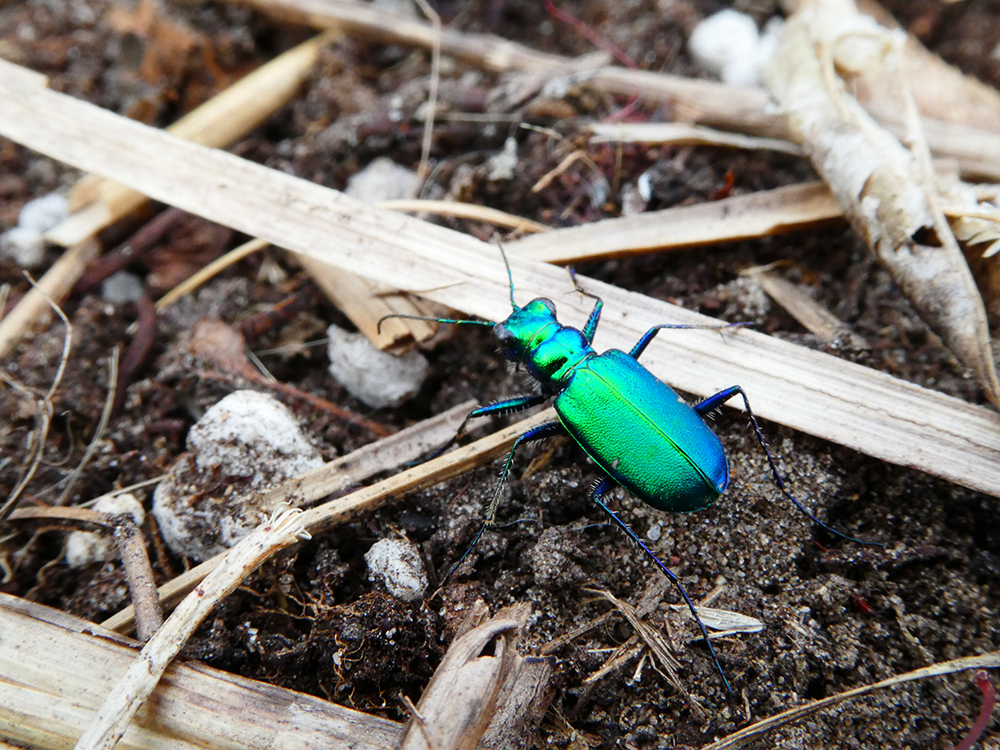
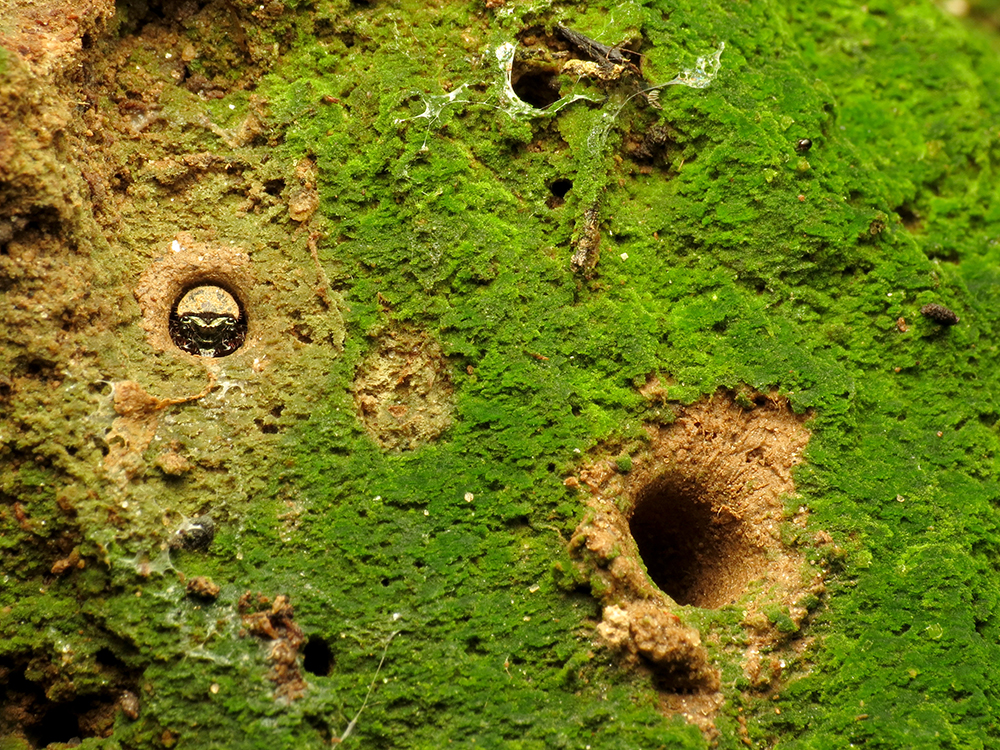
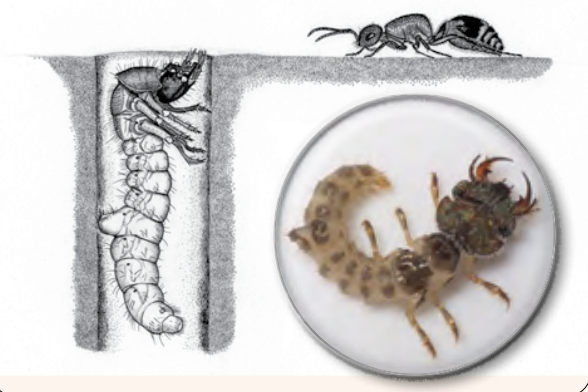
WHERE THEY ARE FOUND: Tiger beetles favor open ground, such as road shoulders and woodland paths, as well as sandy areas like lake or stream edges and dunes. Adult tiger beetles are extremely fast-moving and hunt and chase their prey on the surface of the ground. Tiger beetle larvae typically hunt from cylindrical burrows. Most tiger beetles hunt during the day, though some are active at dusk or are nocturnal.
WHAT THEY EAT: Larvae and adults eat arthropods found on the soil surface.
LIFE CYCLE: Female tiger beetles excavate burrows 3.94–5.9" (10–15 cm) deep in damp, well-drained soil, in which they lay eggs individually. Larvae expand the burrow as they grow and may take two to three years to reach adulthood. They overwinter as larvae in the soil or as adults in grass clumps.
APPROX. NUMBER OF KNOWN SPECIES: 1,300 worldwide (120 in North America).
RELATIVE ABUNDANCE: Data unavailable.
NOTES OF INTEREST:
- Three species of tiger beetle are endangered (e.g., Salt Creek tiger beetle, Cicindela nevadica lincolniana), and two are threatened.
- Adults and larvae have excellent eyesight.
- They are among the fastest insects—recorded at 5.6 mph (9 kph)—and take flight after running quickly.
- Tiger beetle larvae uses hooks on their abdomen to anchor themselves within their burrows.
Variegated mud-loving beetles
PHYLUM: Arthropoda » CLASS: Insecta » ORDER: Coleoptera » FAMILY: Heteroceridae
SIZE: 0.04–0.3" (1–8 mm).
ECOLOGICAL ROLE: Variegated mud-loving beetles move and mix soil, excavating winding burrows. They may also contribute to plant decomposition.
DESCRIPTION: As adults, these small beetles have flattened black or brown bodies with mustard-yellow bands or spots. They have legs with spines used for excavating earth, as well as powerful jaws and short, clubbed antennae.
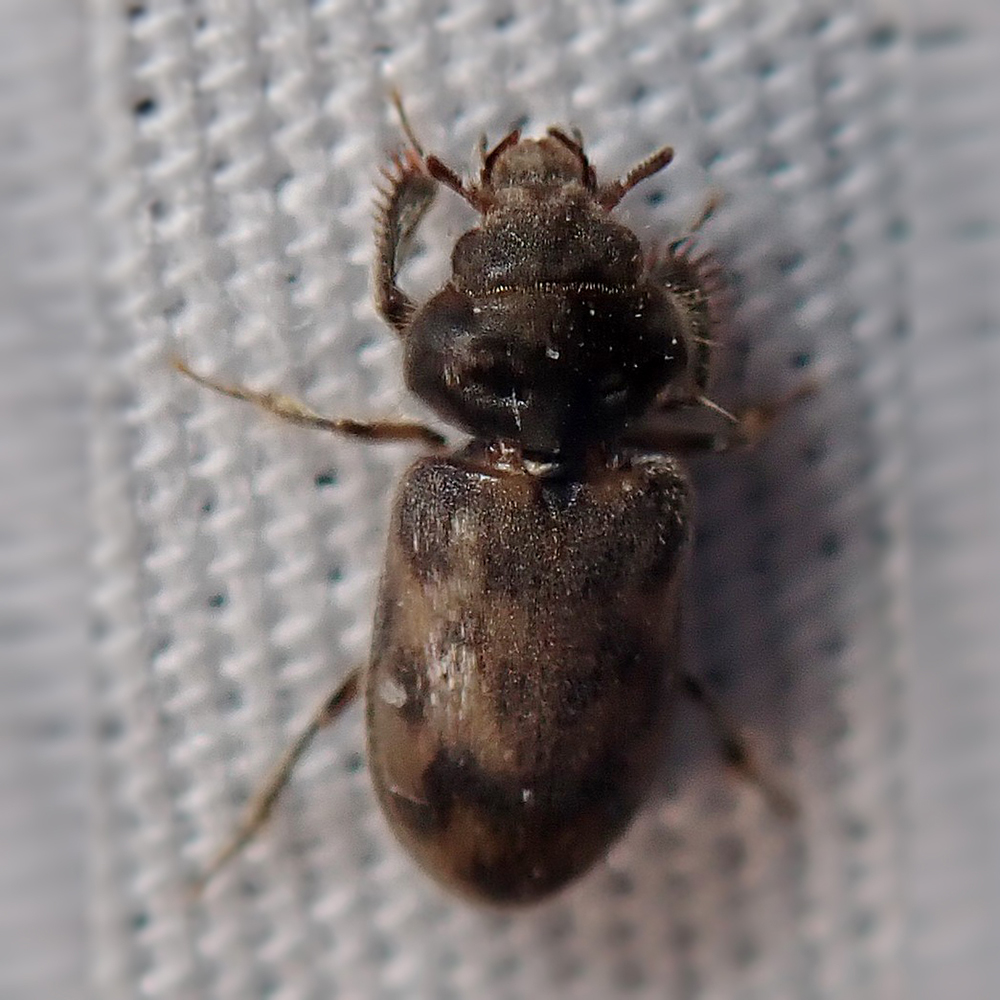
WHERE THEY ARE FOUND: Adults and larvae dig burrows in the muddy soil of stream banks or near ponds. Adults are active at night but will also fly from their burrows if flooding occurs.
WHAT THEY EAT: These beetles consume plant matter, algae, plankton and organic debris.
LIFE CYCLE: Variegated mud-loving beetles lay small masses of eggs in a chamber the soil. Pupation also occurs in the soil.
APPROX. NUMBER OF KNOWN SPECIES: 500 worldwide (40 in the United States).
RELATIVE ABUNDANCE: These beetles can be very abundant on the shores of ponds or stream banks.
NOTES OF INTEREST:
- These beetles are coated with dense hairs that repel water and mud, allowing them to avoid getting stuck in mud.
- Variegated mud-loving beetles are important prey for birds and frogs.
- It is very difficult to distinguish species of these beetles using external characteristics, and anatomy of the male genitals is typically used to separate species (it remains nearly impossible to identify the species of females).
Grubs of scarab beetles and weevils
PHYLUM: Arthropoda » CLASS: Insecta » ORDER: Coleoptera » FAMILIES: Scarabaeidae » subfamilies: Dynastinae, Melolonthinae, Rutelinae; Curculionidae » subfamily: Entiminae
SIZE: 0.08–4.7" (2 mm–12 cm).
ECOLOGICAL ROLE: The larvae, also known as grubs, of scarab beetles and weevils are herbivores, eating plant roots in the soil. They are also burrowers, moving up and down in the soil based on season and precipitation. Though they cause damage to plants, they also improve soil structure as they move around.
DESCRIPTION: Scarab beetle grubs have hard, brown heads with soft, white, C-shape bodies. In adults, scarab beetle size and color patterns can vary, but all have oval bodies and clubbed antennae, and they often have scalloped front legs. Root weevil grubs are legless and have hard, dark heads and white, soft, cylindrical bodies. Adult weevils are small, are usually drab in color, and have an elongated snout and elbowed antennae.
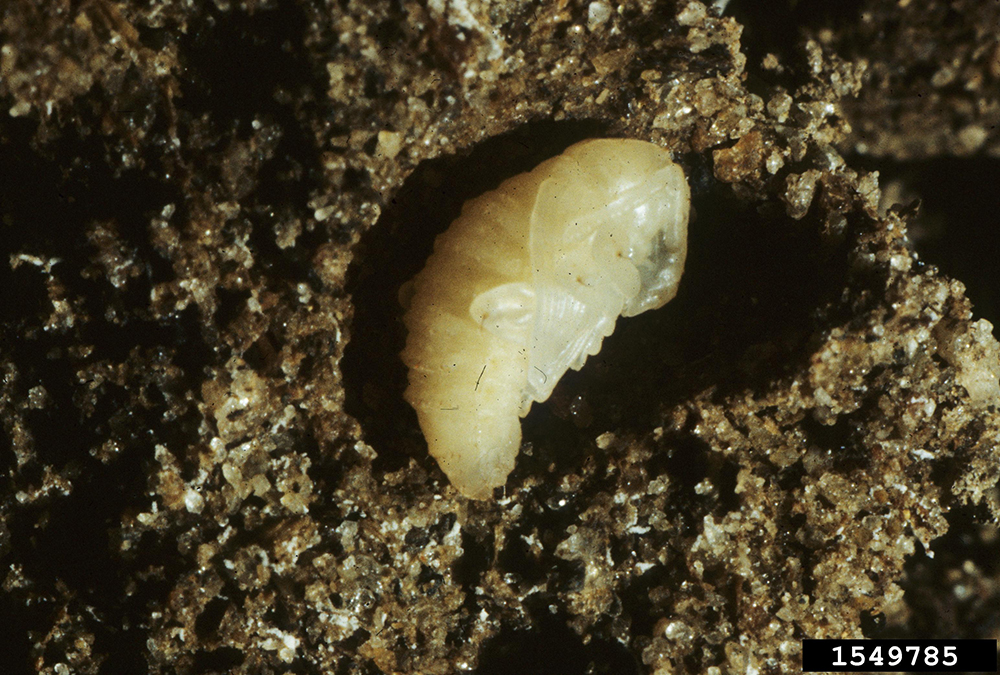
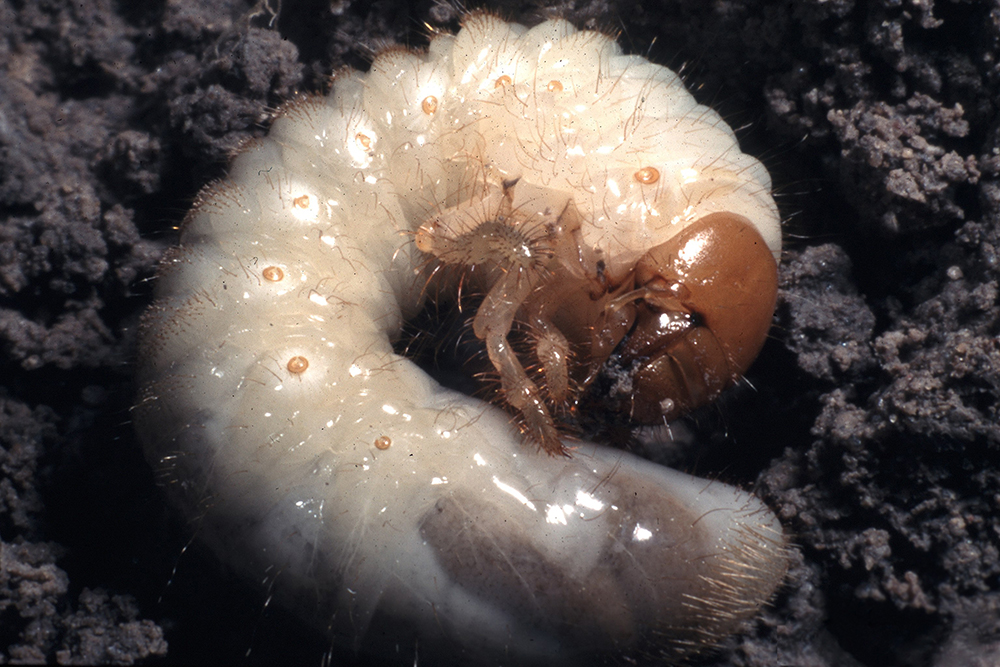
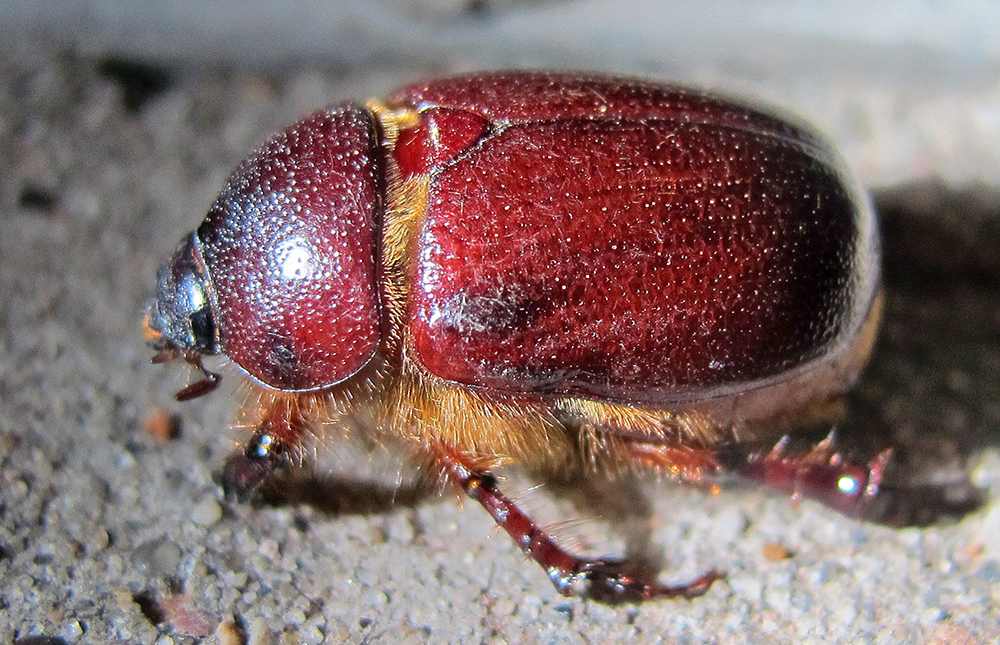
WHERE THEY ARE FOUND: Scarab beetle grubs and weevil grubs are found among plant roots at various depths in the soil. Adults live above ground and are frequently found on plants.
WHAT THEY EAT: Scarab beetles and weevils—adults and larvae—are herbivorous: grubs consume the roots of plants, and adults feed on foliage. Weevil larvae and adults often share the same host plant.
LIFE CYCLE: These insects lay eggs on soil. Larvae then burrow into the soil. Some species mature in a single year, while others feed on roots as larvae for several years—up to five years in cold climates. Larvae overwinter.
APPROX. NUMBER OF KNOWN SPECIES: More than 16,600 scarab beetle grubs (850 in North America) and about 50,000 root weevils worldwide (124 genera in North America).
RELATIVE ABUNDANCE: Beetle grubs can be very abundant. Japanese beetles (Popillia japonica), a scarab beetle introduced in the United States, are found at average densities of 175 per square yard (heavy infestations are 1,500 per square yard). Root weevils were found at densities of up to 463 per square meter in a German forest.
NOTES OF INTEREST:
- Weevils are a highly diverse group of beetles (which is truly something, given how diverse beetles are). According to James Nardi, in his book Life in the Soil, “Different weevils feed on different plant parts, and every plant part is eaten by some weevil somewhere.”
- Some herbivorous scarabs and root weevils, such as the strawberry root weevil (Otiorhynchus ovatus) are agricultural pests.
- The largest beetles in the world are scarab beetles in the genus Goliathus, found in Africa. Other exceptionally large scarab beetles are Hercules beetles (Dynastes) and rhinoceros beetles (Xyloryctes).
Click beetles (or wireworms)
PHYLUM: Arthropoda » CLASS: Insecta » ORDER: Coleoptera » FAMILY: Elateridae
SIZE: Larvae are 0.39–2.4" (1–6 cm) and adults are 0.06–1.6" (1.5 mm–4 cm).
ECOLOGICAL ROLE: Click beetles are decomposers, herbivores, or predators and move lots of nutrients through food webs.
DESCRIPTION: Click beetle larvae—often referred to as wireworms—have elongate, hardened bodies covered with sensory bristles. Adults are brown, gray or black and have a flexible joint that helps them to bend and snap their bodies. These beetles have serrated antennae and elongated bodies that are rounded at both ends.
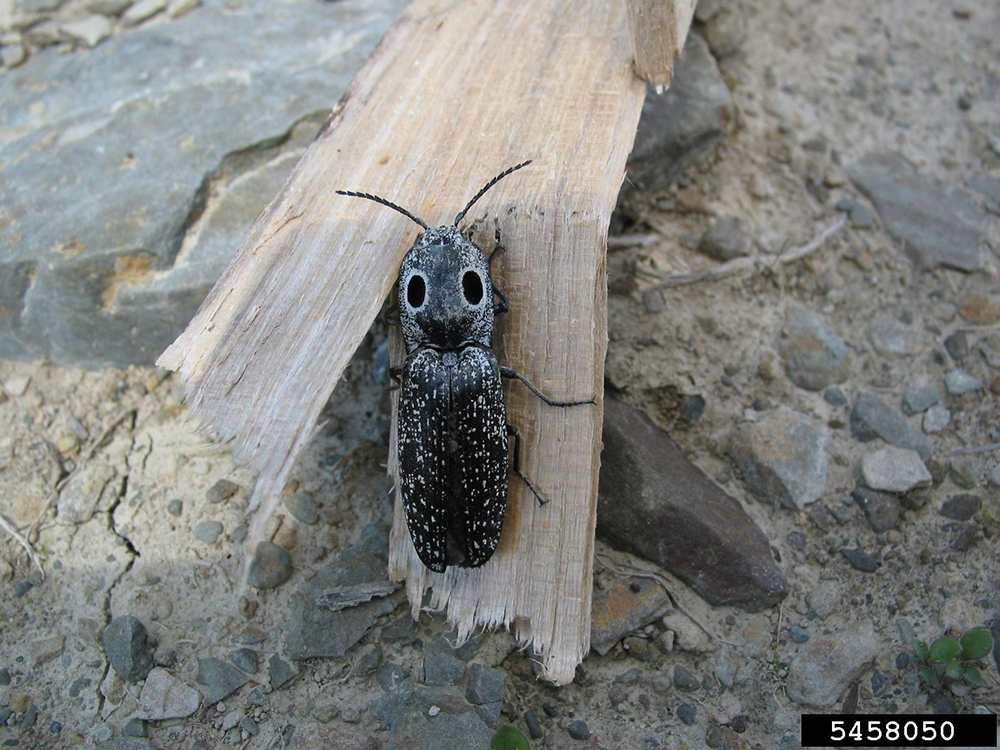
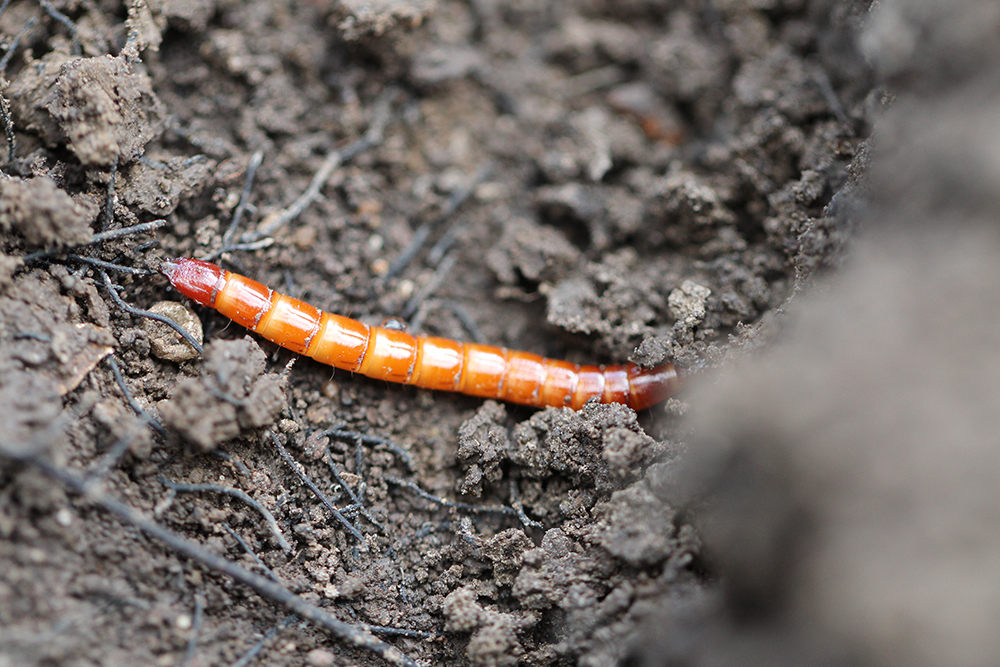
WHERE THEY ARE FOUND: Larvae are associated with dead wood or leaf litter, or they dwell in soil, including in cultivated fields. Adults can be found on vegetation or under bark.
WHAT THEY EAT: Some species eat plant debris, while others prey on other arthropods; root-feeding wireworms can damage crops by chewing on roots, and they are pests in crops such as corn, carrots and potatoes.
LIFE CYCLE: Larvae spend three to seven years underground and may go through nine to 15 instars before pupating in the ground, in dead wood, or under bark. Development time varies with species, nutrition, and climate.
APPROX. NUMBER OF KNOWN SPECIES: 9,000 worldwide (900 in North America).
RELATIVE ABUNDANCE: Data unavailable.
NOTES OF INTEREST:
- Their common name comes from the audible click sound that occurs when an adult beetle flexes and then straightens its body, propelling itself into the air. This action allows click beetles to flip themselves over if they are ever on their backs.
- Wireworms (larval stage) spend much of their life in the soil.
- The damage threshold in crops is generally about 100,000 larvae per acre. Soil sampling or baiting can help determine wireworm presence.
Dung beetles
PHYLUM: Arthropoda » CLASS: Insecta » ORDER: Coleoptera » FAMILIES: Geotrupidae, Scarabaeidae » subfamilies: Aphodiinae, Scarabaeinae
SIZE: 0.08–1.2" (2 mm–3 cm).
ECOLOGICAL ROLE: Dung beetles are scavengers and decomposers, transforming manure to humus and speeding up the process of returning nutrients to the soil. These beetles are particularly important to the cattle industry; their work enhances forage palatability, recycles nitrogen, and reduces pest and parasite habitat. Dung beetles’ ecosystem services to agriculture are easily worth more than $380 million annually. This figure, from Losey and Vaughan (2003), is an estimate of the losses to producers in the cattle industry due to forage fouling, nitrogen volatilization, parasitism, and pest flies that were averted because of the work of dung beetles. This number is an underestimate because dung beetles also provide their recycling services to other rangeland and pasture-raised animals (e.g. bison, dairy cattle, sheep, horses and more). These beetles make burrows, digging nests to 23.6" (60 cm) deep or more, and they disperse seeds present in dung. Additionally, dung beetles can reduce food-borne pathogens on crops by disrupting dung-feeding flies that are vectors of the pathogens.
DESCRIPTION: Adults have oval, convex bodies that are dull black, but some are shiny black and a few are metallic green to copper. They have clubbed antennae and toothed or scalloped front legs. Larvae have hard heads and white, soft bodies that are curved in a C-shape.
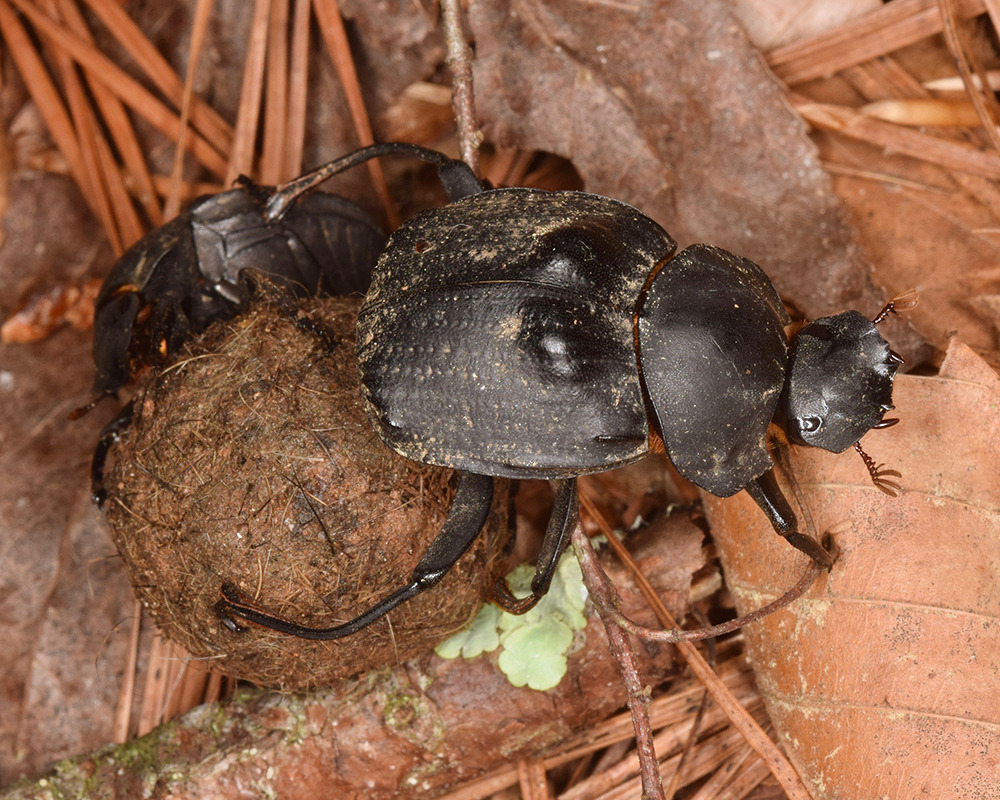
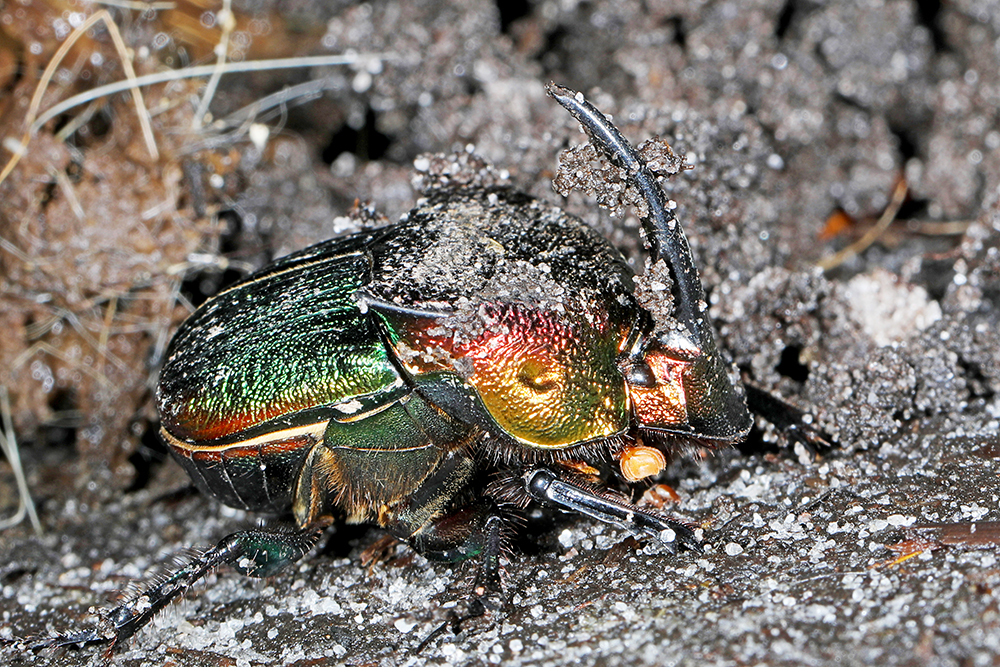
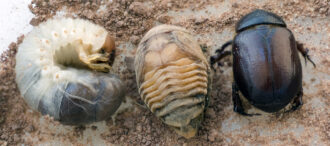
WHERE THEY ARE FOUND: Larvae are found within dung or within nests provisioned with dung, and adults are found near dung in many habitats, including grasslands, forests, farmlands and deserts.
WHAT THEY EAT: These beetles feed on the waste of mammals, particularly herbivores. The dung of herbivores contains partially digested plant material, and the adults feed on the dung juices while the larvae feed on the fibrous content.
LIFE CYCLE: The odor of fresh dung attracts adult beetles that fly to it in order to collect food for their young. Some beetles excavate a tunnel for a nest immediately below the dung; from the main shaft, females will dig brood chambers and deposit an egg in each, along with pieces of dung. Others lay their eggs within the pat of dung. A few species will roll a portion of the dung away from the pat before concealing the ball underground. Dung beetle larvae munch through their weight in dung each day until they reach pupation. Life spans can extend up to three years.
APPROX. NUMBER OF KNOWN SPECIES: 5,000 worldwide (550 in North America).
RELATIVE ABUNDANCE: Diversity is lowest in highly altered landscapes, but a few common generalist species can be very abundant in areas like pastures.
NOTES OF INTEREST:
- The burial of dung changes the nutrients available in the soil, increasing phosphate, nitrate, sulfur, and carbon.
- Dung beetles are highly efficient; for example, within prairies without introduced grazers, dung beetles can completely remove the dung of native mammals (e.g., deer and coyote) in one to two days.
- Organic farming tends to promote dung beetle diversity compared to conventional farming. In a study on food-safety risks, dung beetles on organic farms removed dung more effectively and suppressed human pathogenic E. coli.
- Dung beetles were sacred to ancient Egyptians, who saw dung beetles rolling their dung as earthly manifestations of the sun god Ra escorting the sun to the horizon each day. Dung beetles were also attributed with the power to be reborn after death, based on observations of adult beetles emerging wholly from the ground after the pupal stage, which was perceived as death.
- Pesticides used to treat cattle for parasites can have detrimental impacts on dung beetles. Synthetic pyrethroids are less damaging than macrocyclic lactone pesticides, but farms that use them still have reduced abundance of some species. Loss of dung colonizers may delay dung pat decomposition.
- Dung beetles contribute to a number of ecological processes, including nutrient cycling, plant productivity and growth, soil mixing, secondary seed dispersal, and control of flies and parasites.
- Agroforestry practices may support a greater diversity of dung beetles on farms because they contribute to habitat heterogeneity.
- Annually, dung beetles can bury a ton of dung on 2.5 acres (1 hectare) of soil.Dung beetles try to steal balls or usurp pats from one another—dung is a valuable resource!
- Dung beetles that consume kangaroo dung do not find dung of other grazers palatable. In Australia, dung of introduced grazers began to overtake pastures, and so dung beetles that consumed cattle, horse, and sheep dung were introduced.
Hister beetles
PHYLUM: Arthropoda » CLASS: Insecta » ORDER: Coleoptera » FAMILY: Histeridae
SIZE: 0.02–0.39" (0.5–10 mm).
ECOLOGICAL ROLE: Hister beetles are predators of insects and other arthropods. These beetles are particularly known for reducing fly maggots in dung and carrion. They are allies for ranchers and producers.
DESCRIPTION: Adult hister beetles have black, glossy oval bodies, with wing covers that cut off squarely, leaving several abdominal segments visible. They have elbowed antennae and spines on their legs. Larvae have large, hard jaws and a soft, cream-colored body, with tiny legs that are disproportionately small for their body size.
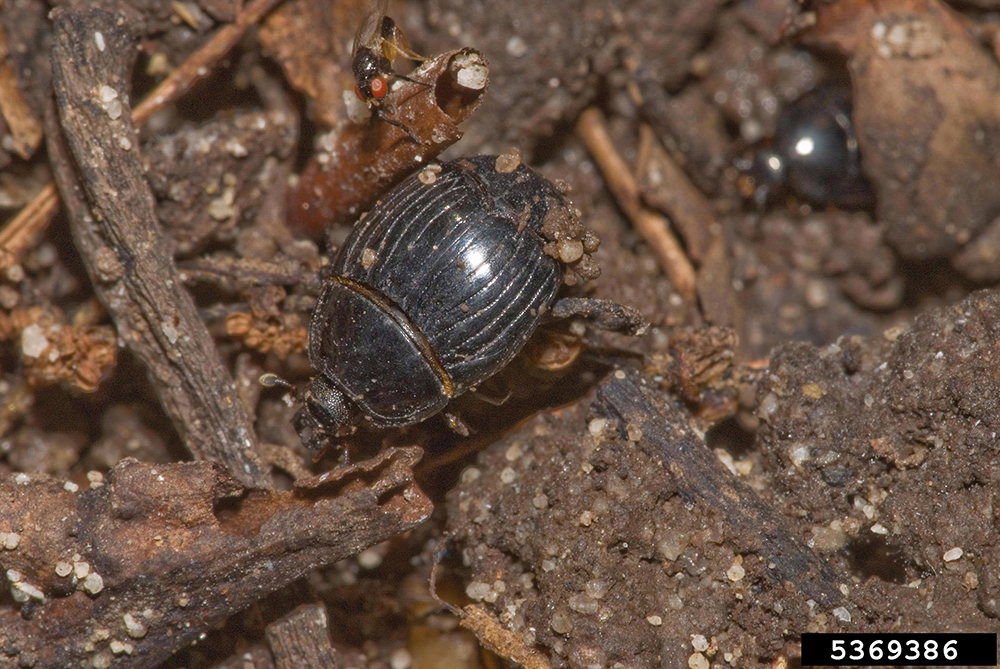
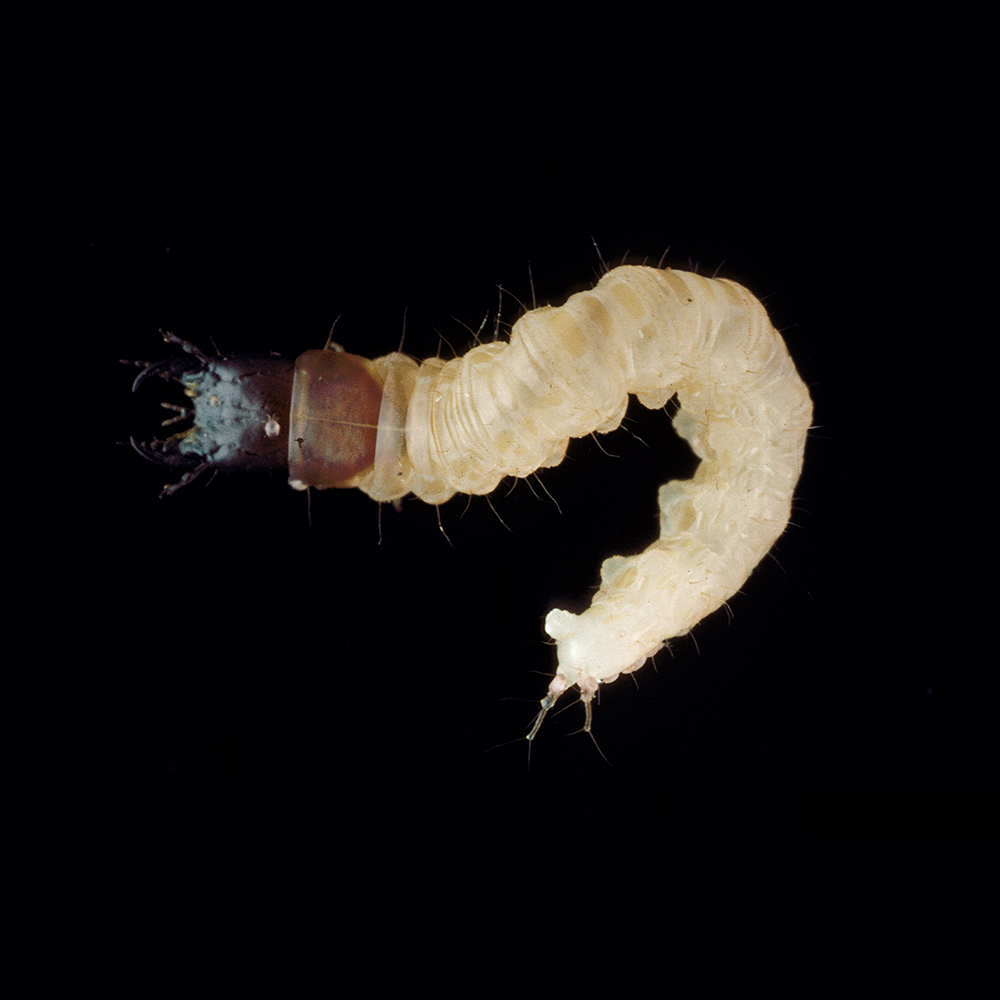
WHERE THEY ARE FOUND: These beetles are found near decaying matter, including dung, carrion and fungi; under the bark of logs; in leaf litter; within the nests of ants, termites or birds; or in mammal burrows. Their habitats are widespread, ranging from farmland to grassland to forests—anywhere they can live in close proximity to their prey.
WHAT THEY EAT: Hister beetle adults and larvae consume the insects that live in decaying materials, such as fly maggots and pupae.
LIFE CYCLE: These insects lay eggs near a food source (e.g., in dung) that adults loc through odor. Larvae and pupal stages can develop fairly quickly, and hister beetl can develop from egg to adult in less than 30 days. Adults can live for two to three years.
APPROX. NUMBER OF KNOWN SPECIES: 4,000 worldwide (about 500 in North America).
RELATIVE ABUNDANCE: Data unavailable.
NOTES OF INTEREST:
- Carcinops pumilio has been studied for its use in controlling flies in manure in poultry production, as an augmentative biological control agent.
- Dung beetles and carrion beetles benefit from the presence of hister beetles, who reduce competition with fly maggots.
Hister beetles will pretend to be dead if they feel at risk. - Hister beetles often carry predatory mites on their bodies, dispersing the mites wherever they go. These mites also often consume fly eggs and maggots.
Carion beetles and burying beetles
PHYLUM: Arthropoda » CLASS: Insecta » ORDER: Coleoptera » FAMILY: Silphidae » subfamilies: Nicrophorinae, Silphinae
SIZE: 0.47–1.6" (1.2–4 cm).
ECOLOGICAL ROLE: Carrion beetles and burying beetles are the primary arthropods that contribute to the decomposition of animal carcasses. Carcasses decompose significantly slower without their work.
DESCRIPTION: Adults are large and brightly colored beetles with clubbed antennae. Carrion beetles (Silphinae) have a broadly oval, slightly flattened body and are mostly black, with yellow or orange markings. Burying beetles (Nicrophorinae) are primarily black, with red or orange patterns on their wing covers and brightly colored antennae. The carrion beetles in the genus Silpha are dark brown or black, with bright yellow on their thorax. Carrion and burying beetle larvae are dark and appear as if they are attired with armored plates.
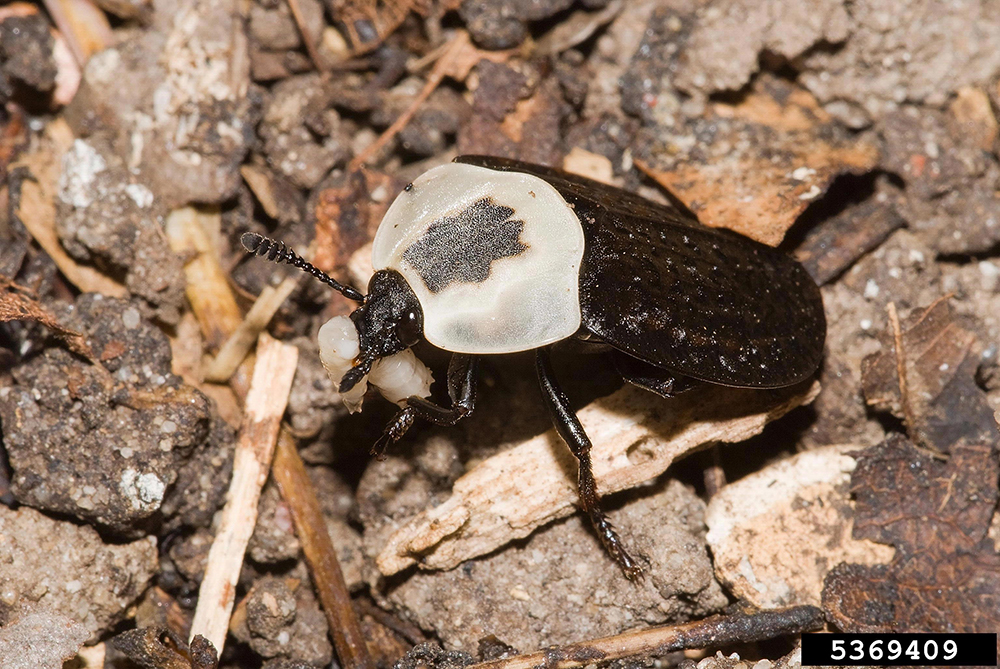
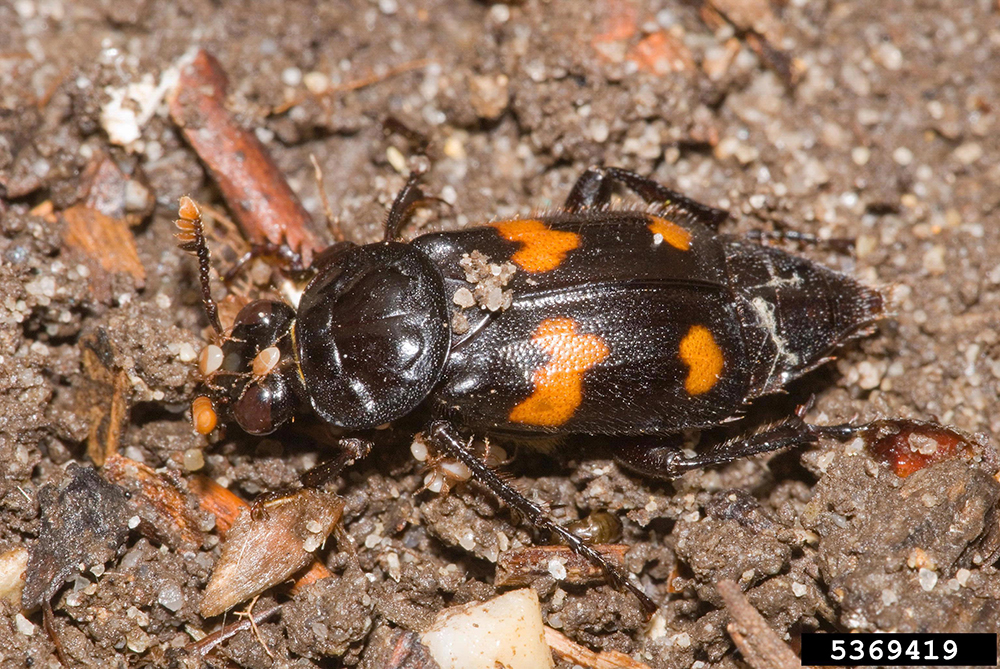
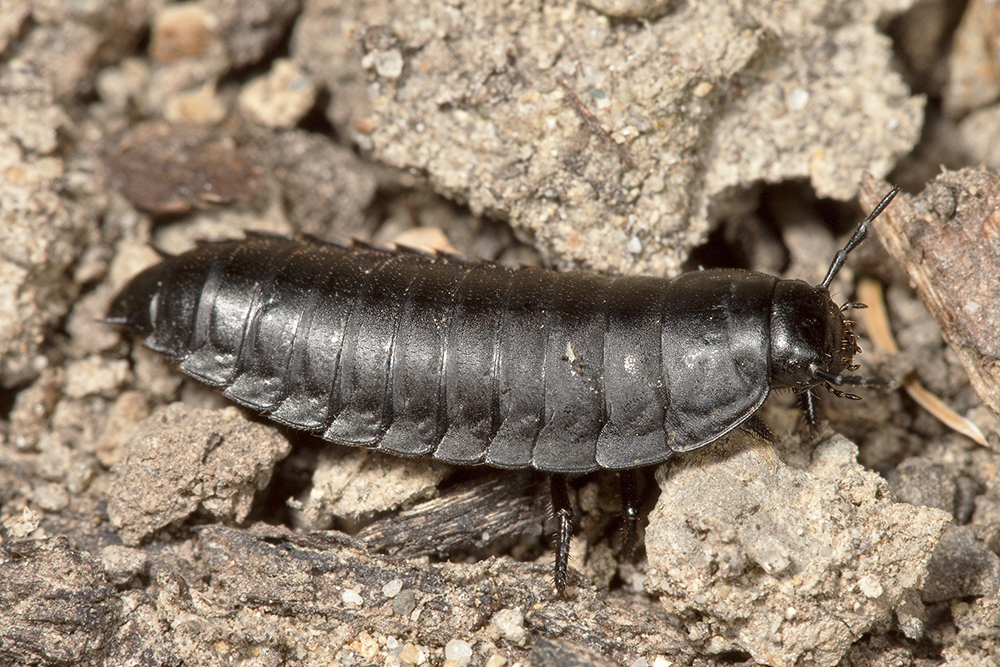
WHERE THEY ARE FOUND: Carrion beetles and burying beetles are found near, under, or in the bodies of dead animals; they occur in a variety of habitats. A few species are found either on fungi or in ant nests.
WHAT THEY EAT: Burying beetles excavate beneath the bodies of small vertebrate animals, causing the body to sink into the ground. Carrion beetles consume carrion as it lies. Carrion and burying beetles can detect the odor of carrion from great distances and are strong fliers.
LIFE CYCLE: Burying and carrion beetles lay their eggs on or near animal carcasses. Carrion beetles are found on unburied bodies of large dead mammals such as raccoons, horses, and cows. Only burying beetles bury dead animals. Larvae and adults feed on carrion; larvae and adults of some carrion beetles will also feed on fly larvae and other beetle larvae. Female burying beetles will feed regurgitated carrion to their newly hatched larvae. Pupation of burying beetles occurs in the soil near the chamber with the carcass. Carrion beetles also pupate in the soil, and adults overwinter.
APPROX. NUMBER OF KNOWN SPECIES: 215 worldwide (30 in North America).
RELATIVE ABUNDANCE: These beetles are typically in low in abundance, but multiple species co-occur.
NOTES OF INTEREST:
- Burying beetles may need to move a carcass several feet in order to find a suitable place to dig (they are very strong). There is a great deal of competition for dead bodies, and so speed in burying the body is essential. A breeding pair works together to bury and prepare a dead body, and this biparental care is pretty unique among insects.
- Burying beetles prefer birds and small mammals over large mammals.
- Burying beetles reduce competition with other carrion decomposers by killing fly eggs and maggots on or in the carrion. There are also predatory mites (e.g., in the genus Poecilochirus) that hitch rides on carrion beetles, dropping off the beetles when at a new carcass to consume small carrion consumers like flies.
- These mites will then climb back on to the beetles to be transported to another carcass.
- The American burying beetle (Nicrophorus americanus) is a federally registered endangered species. Once present in at least 35 states, it now has populations in only six states (Rhode Island, Arkansas, Kansas, Oklahoma, Nebraska, and Massachusetts).
Dermestid beetles (or hide beetles and carpet beetles)
PHYLUM: Arthropoda » CLASS: Insecta » ORDER: Coleoptera » FAMILY: Dermestidae
SIZE: 0.08–0.47" (2–12 mm).
ECOLOGICAL ROLE: Hide beetles are scavengers, feeding on a variety of animal and plant tissues, and assist in the decomposition process.
DESCRIPTION: Adults have oval, convex bodies that are usually gray, brown or black, sometimes with color patterns, and they are covered in fine scales or short hairs. Their antennae are short and clubbed, and they have chewing mouthparts. Larvae of these beetles are often brown and covered with long hairs or tufts of hairs.
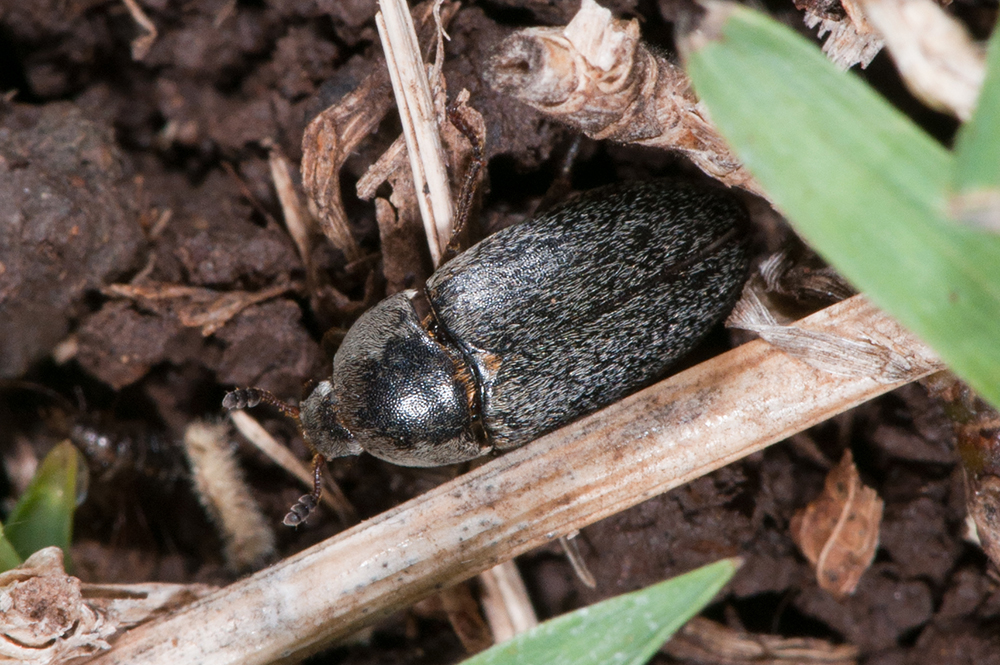
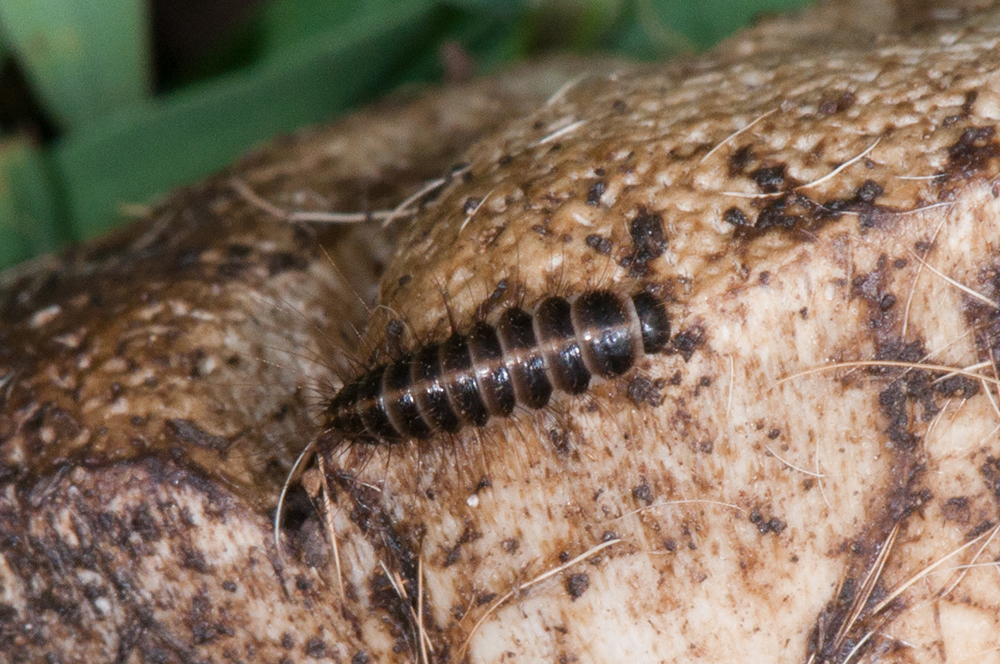
WHERE THEY ARE FOUND: Larvae and adults are found on animal carcasses, as well as in nests of insects, birds, and mammals. Adults of some species can be found on flowers.
WHAT THEY EAT: Hide beetles consume animal skin, fur, feathers and carrion. In built environments, they also will eat stored grains or wool, silk, cotton and more—earning them another common name: carpet beetles.
LIFE CYCLE: Development time from egg to adult varies with species; some hide beetles develop into adults within six weeks, while other species may take nearly a year.
APPROX. NUMBER OF KNOWN SPECIES: 1,000 worldwide (120 in North America).
RELATIVE ABUNDANCE: Data unavailable.
NOTES OF INTEREST:
- The larvae can digest keratin, found in hair and feathers.
- Hide beetles are used in museums to clean off vertebrate skeletons and in forensic entomology to estimate the age of corpses.
- These beetles are the bane of insect collections, as they can destroy dead, pinned insects in very little time.
- Several species of hide beetle are economic pests, causing significant damage to stored products such as grains and seeds, dried meats and cheeses, and materials of animal origin like wool, fur and silk.
Sap beetles
PHYLUM: Arthropoda » CLASS: Insecta » ORDER: Coleoptera » FAMILY: Nitidulidae
SIZE: 0.04–0.59" (1–15 mm).
ECOLOGICAL ROLE: Sap beetles are decomposers and fungivores in soil food webs.
DESCRIPTION: Adults have oval or elongate bodies, short wing covers that leave the end of the abdomen exposed, and clubbed antennae. They are often dark in color, sometimes with mustard-yellow markings. Larvae have white, cylindrical bodies with a brown head.
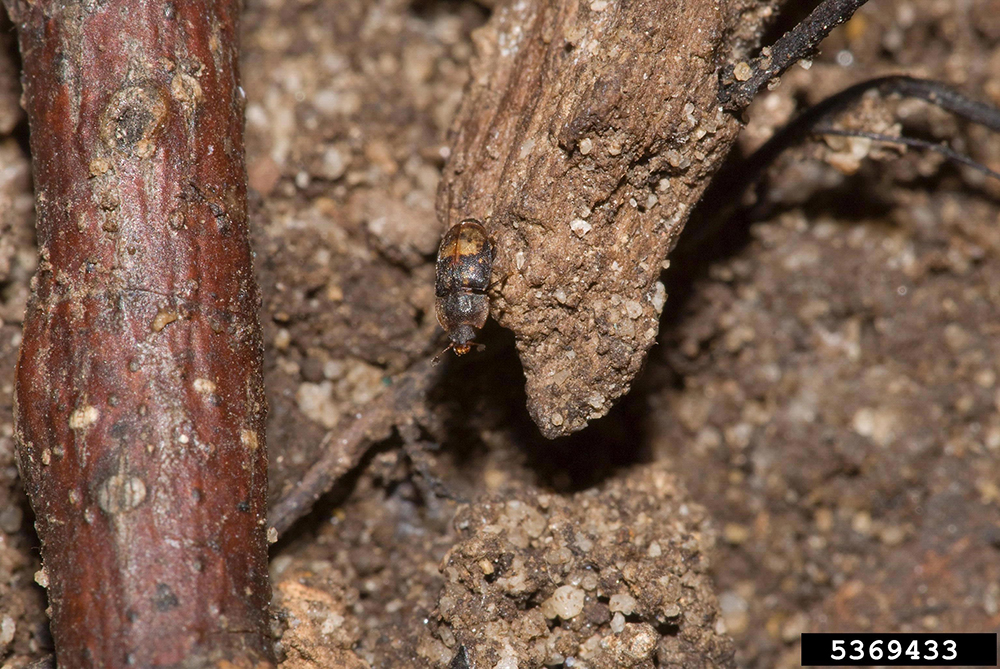
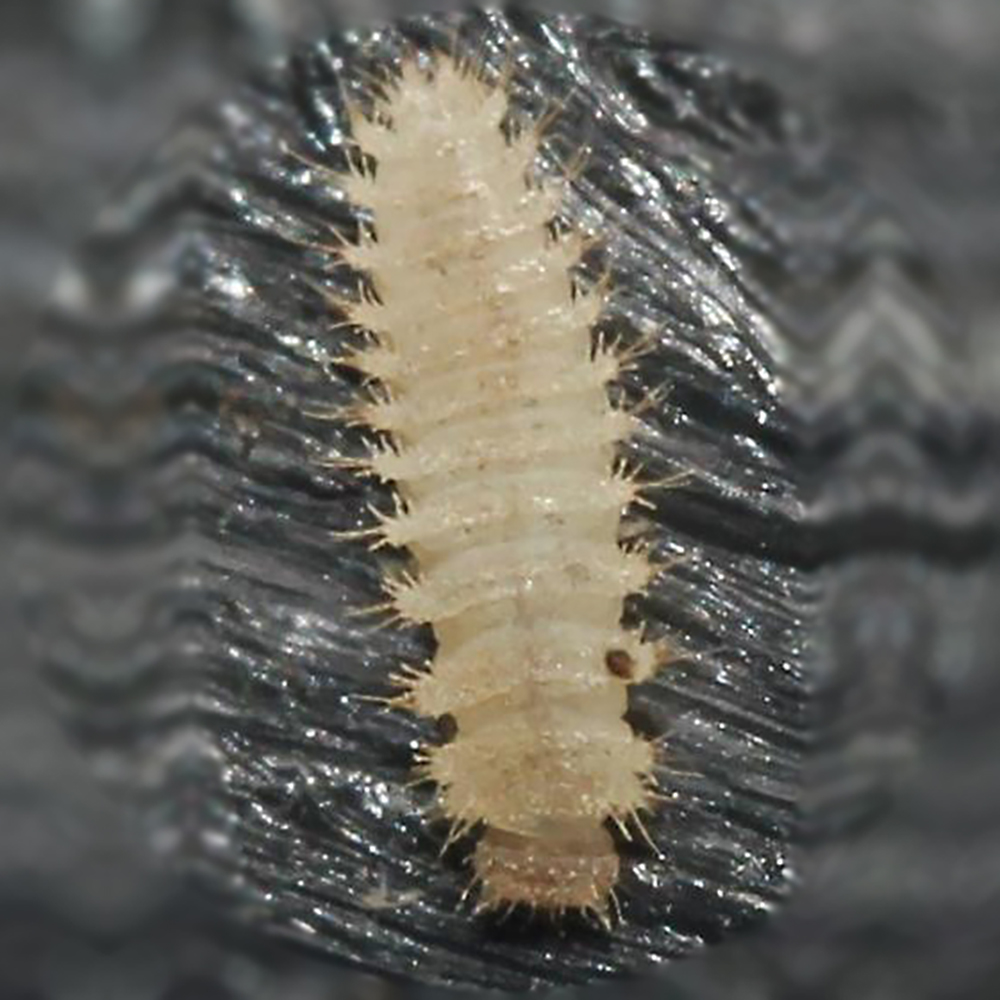
WHERE THEY ARE FOUND: Sap beetles are found beneath bark of dead stumps or logs, near fungi and sap, rotting fruit.
WHAT THEY EAT: Larvae and adults consume fungi but also eat flowing sap and decaying fruits, and some feed on carrion. Some adults also eat nectar or pollen.
LIFE CYCLE: Sap beetles lay eggs near a food source. Pupation occurs in the ground. Development time is fairly short, and there can be multiple generations per year.
APPROX. NUMBER OF KNOWN SPECIES: 4,500 worldwide (165 in North America).
RELATIVE ABUNDANCE: Sap beetles can be concentrated in areas with food sources. For example, picnic beetles (Glischrochilus spp.) can aggregate at certain sites.
NOTES OF INTEREST:
- The dusky sap beetle (Carpophilus lugubris) is a pest of sweet corn—the larvae feed at the tip of an ear of corn and are often missed during the canning process.
- Some species wait by ant trails at night to scare ants into regurgitating their food, which the beetles then pillage.
- Small hive beetle (Aethina tumida), a species introduced in the United States, can do damage to honey bee hives.
Beetles associated with logs
A number of beetles dine on and reside in rotting logs. These beetles are important decomposers, helping to break down dead wood. Wood fibers like cellulose are difficult to break down, and these beetles often have bacteria, fungi or protozoa in their digestive tracts that aid in digestion.
BESS BEETLES (Passalidae) are large, measuring 1.2–1.57" (30–40 mm). They have shiny, black bodies—bess beetles are also known as patent leather beetles—and longitudinal grooves on their wing covers. They have a square-shaped thorax, clubbed antennae, a horn on their head and large mandibles. Larvae are large white grubs that assume a C-shape posture when not active. Bess beetles live in rotting logs, within galleries in family groups of larvae and adults—unusual for beetles. Adults provide care for their young, preparing and feeding them decaying wood. They only consume wood where fungi and bacteria are present, breaking down the wood, to aid in their digestion. After pupation, young beetles leave their parent log to mate and colonize a new log. Adults produce squeaking noises (rubbing the undersides of their wings across roughened areas on the back of their abdomen) that help them stay in touch with each other. There are at least 14 calls, including mating calls and signals of distress.
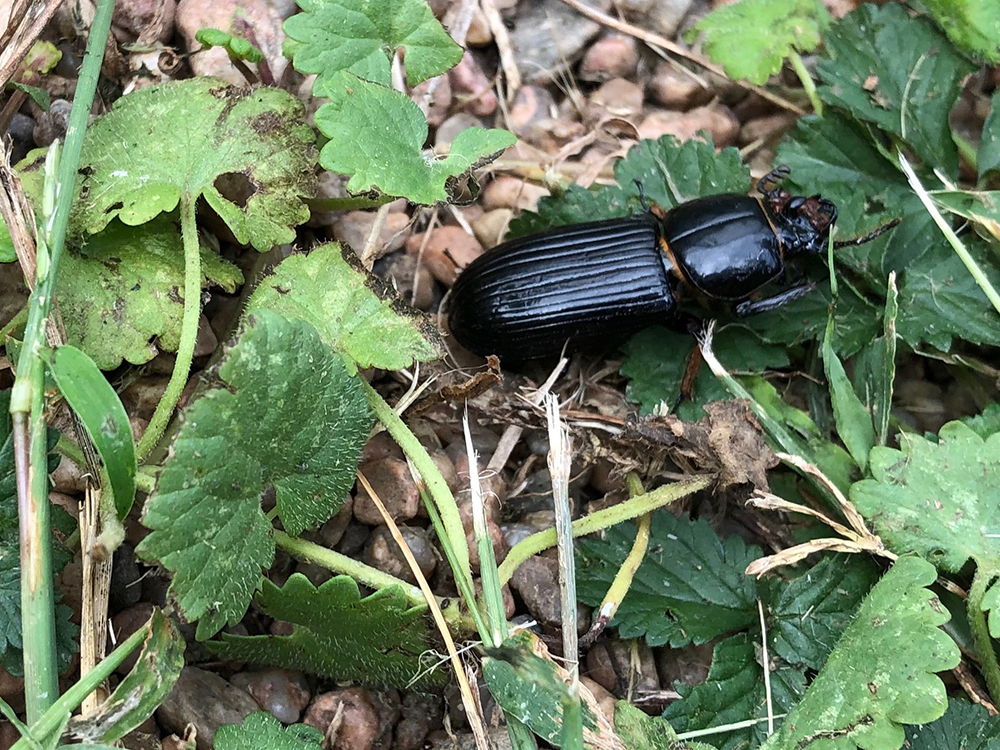
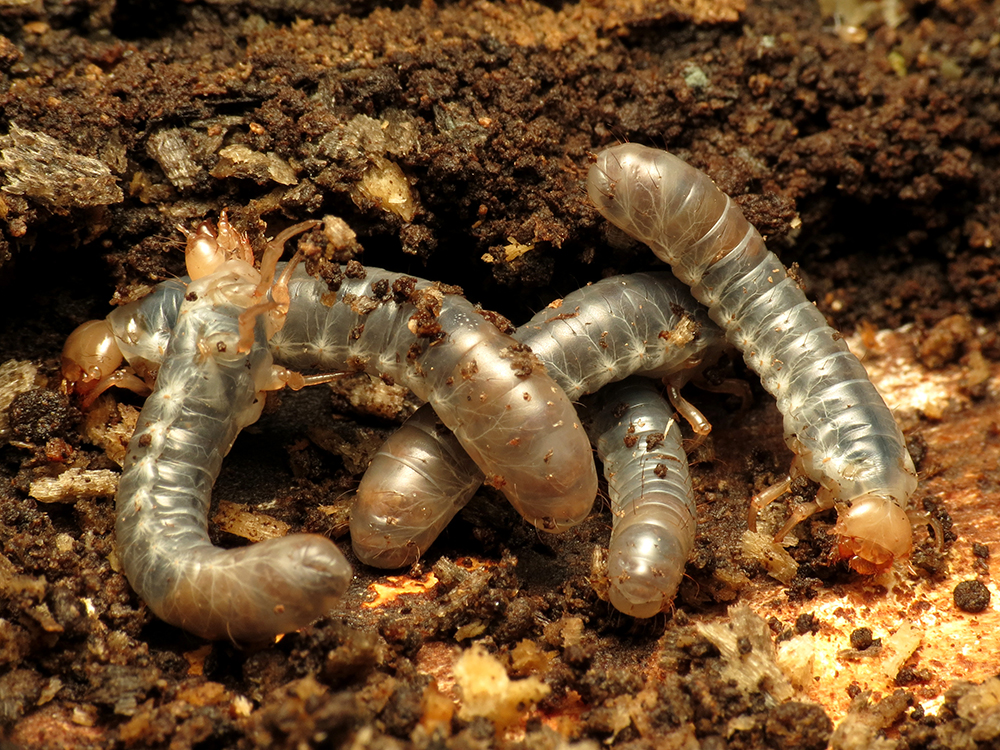
STAG BEETLES (Lucanidae) are also quite large in size, measuring 0.59–1.58" (1.5–4 cm), with similar body shapes as bess beetles. Some male stag beetles have large mandibles that are nearly half as long as their body often with branches like a stage.
These mandibles are used in viying for territory and mates. Larvae reside in decaying wood, feeding on its juices and associated fungi. Stag beetles may spend up to six years as larvae.
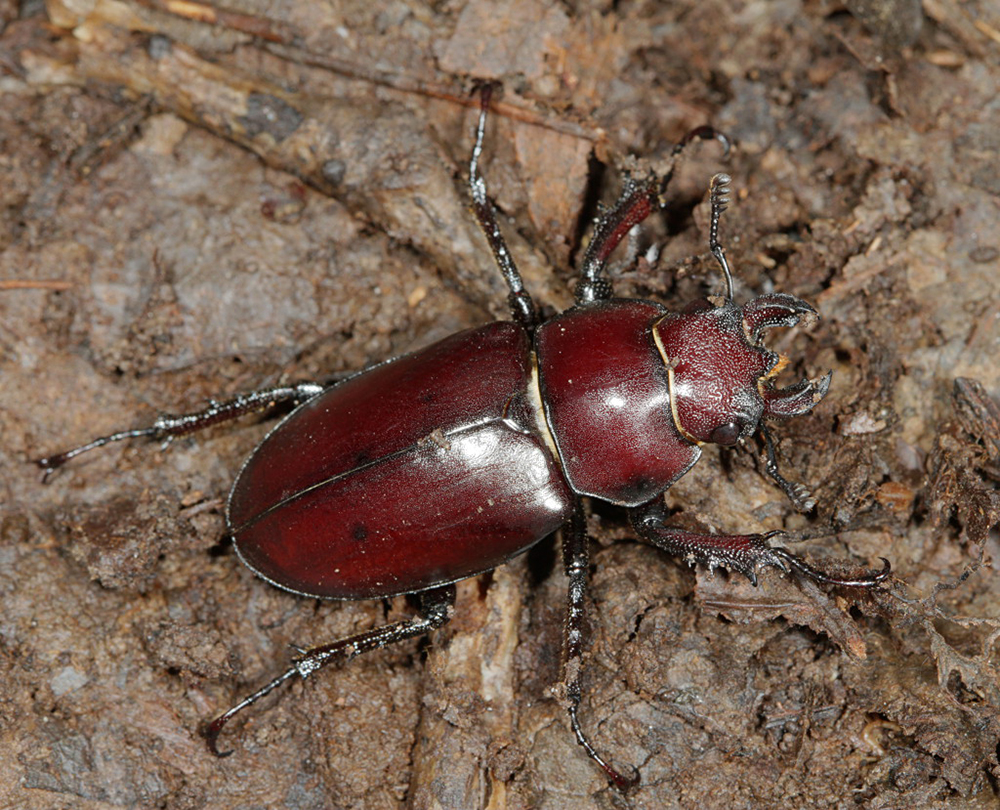
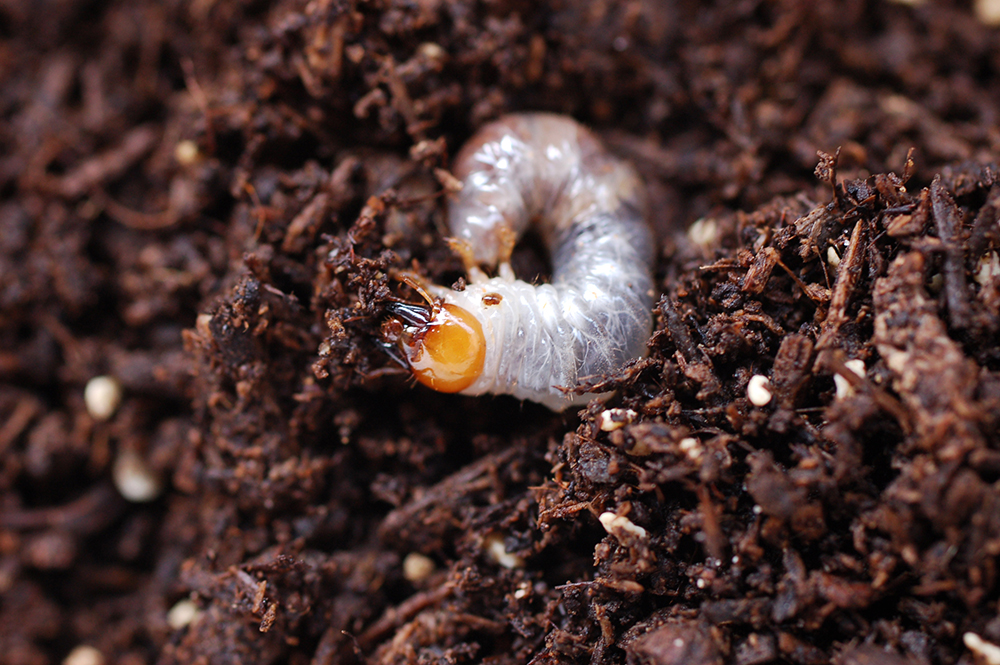
FALSE CLICK BEETLES (Eucnemidae) are small measuring 0.39" (10mm) or less, and are brown, resembling click beetles in appearance. Adults quicker their antennae almost constantly, and so like click beetles, can click and jump. Their larvae are legless and eyeless and they tend to bore across the grain of dead wood. Larvae have preferences for wood that has just begun to decay.
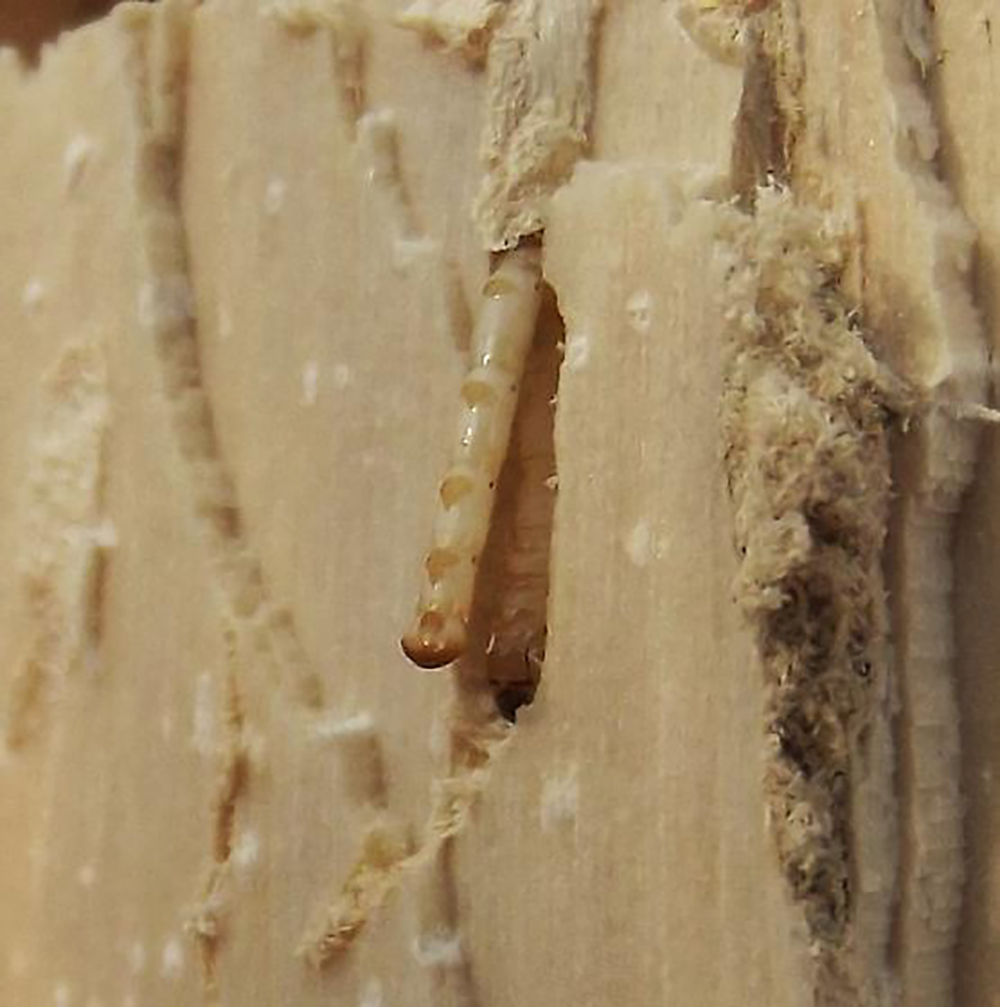
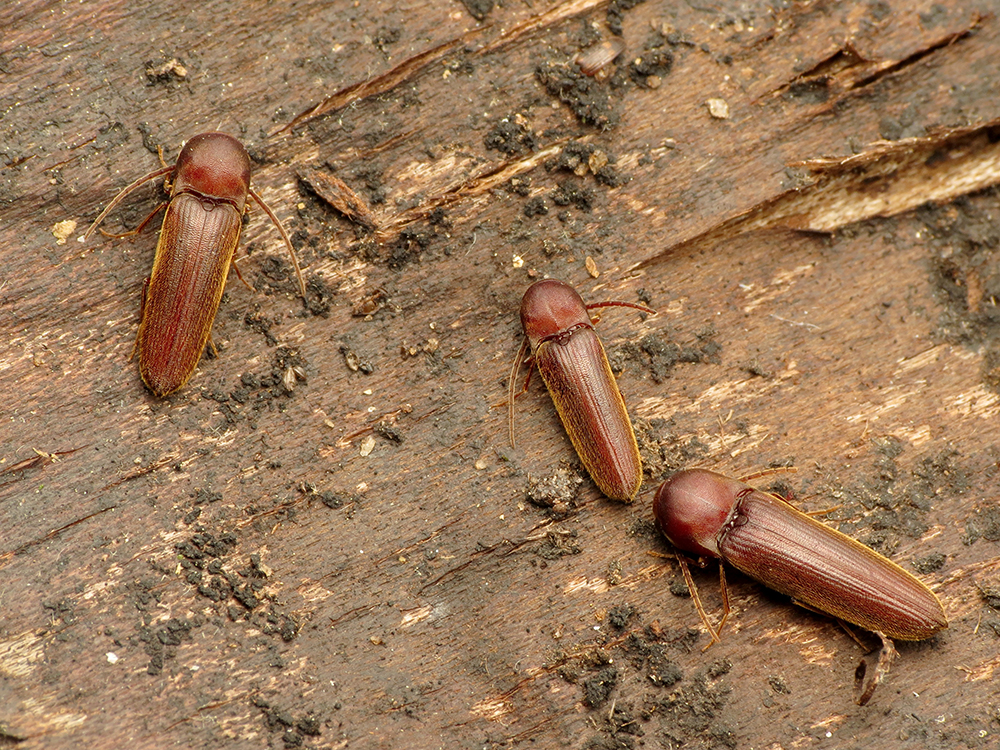
TOE-WINGED BEETLES (Ptilodactylidae) are small, measuring 0.16–0.24" (4–6 mm), with brown, elongate, oval bodies and long, serrated antennae. Their head is not generally visible from above. Larvae occur in and consume damp wood or decaying vegetation, and adults are found on vegetation, often near streams. Some larvae are aquatic.
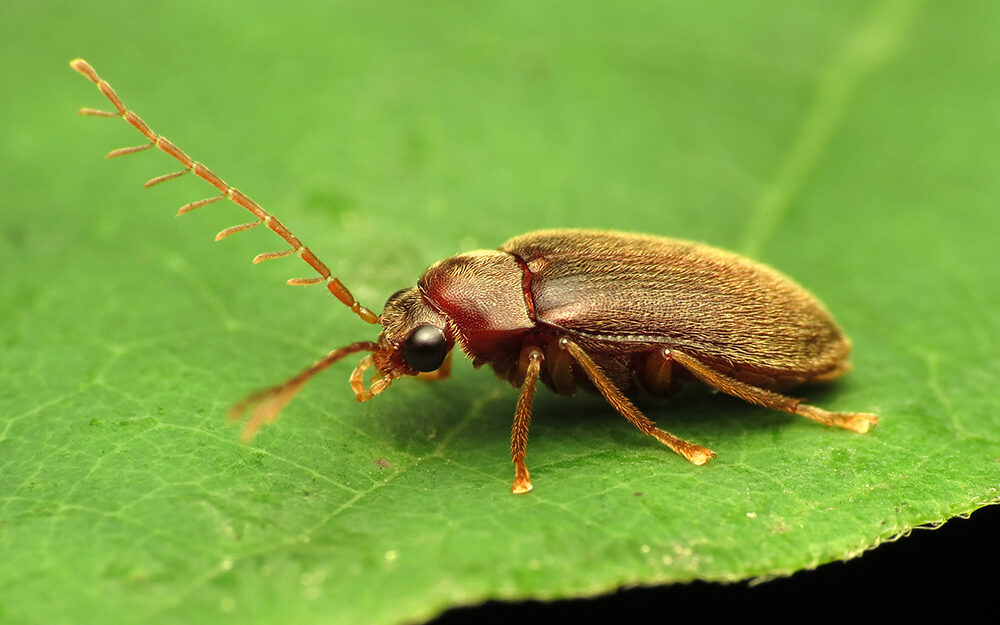
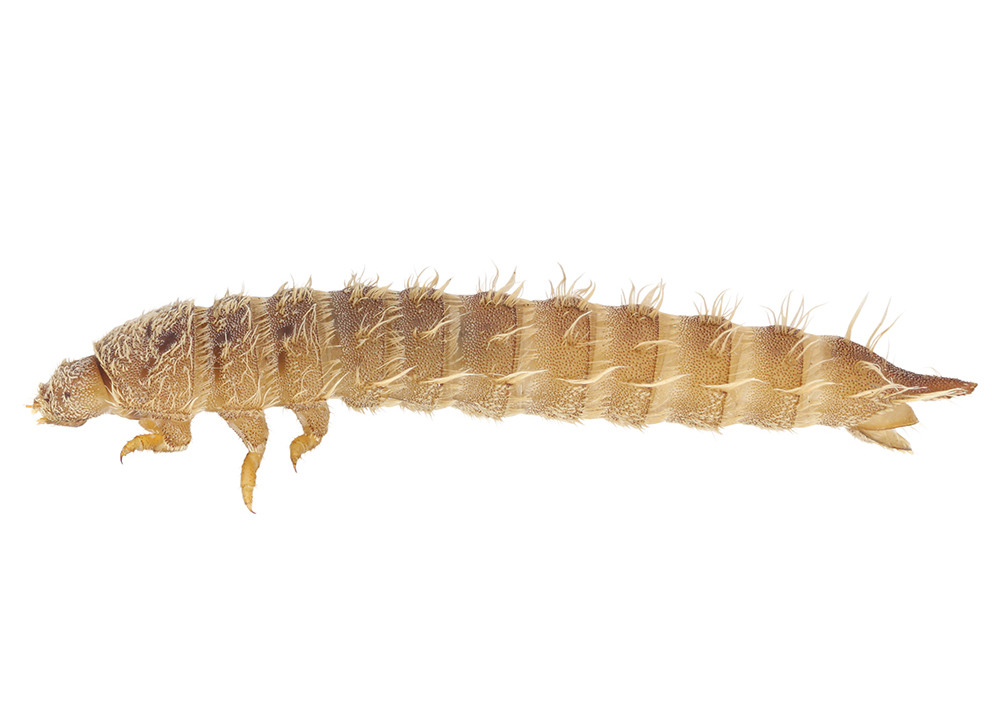
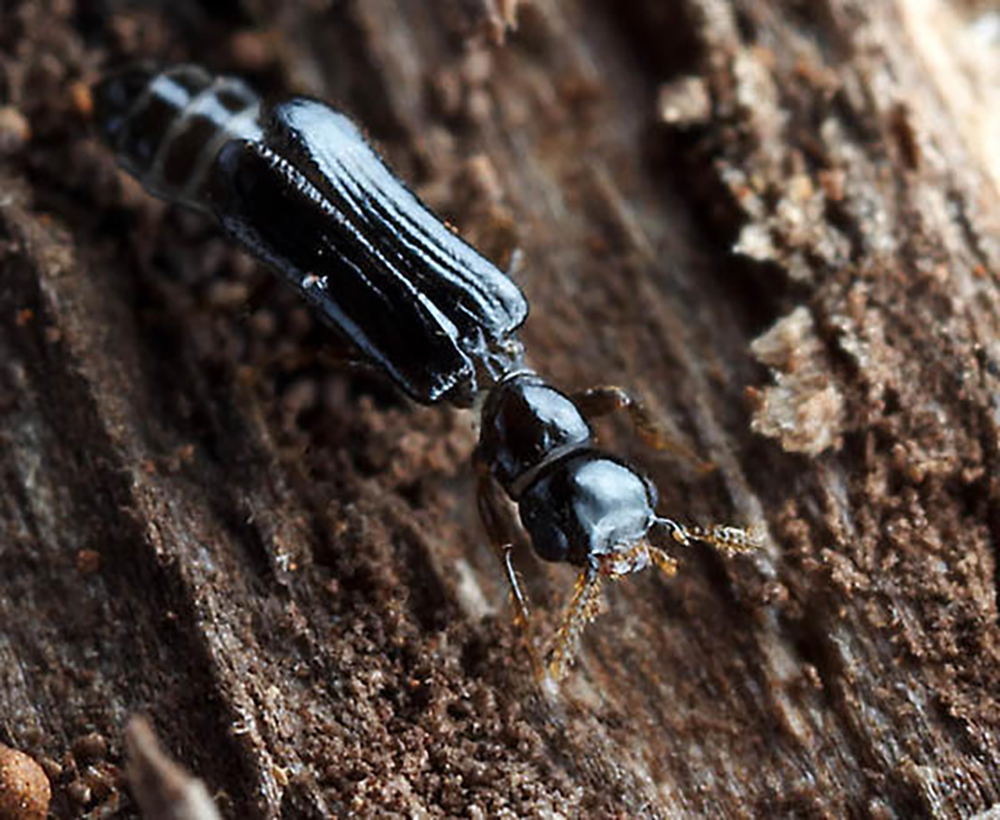
The TELEPHONE-POLE BEETLE (Micromalthus debilis) is a beetle species found in eastern North America and is the only living species in an otherwise extinct family. They are small, measuring 0.06–0.1" (1.5–2.5 mm), and dark in color, with large eyes that protrude on the sides of their head. Larvae feed on moist, decaying wood—primarily oak and chestnut logs (but also rotting telephone poles, hence their common name). Unusually, these beetles give birth as larvae and without mating. They are the only known beetle with this reproductive strategy.
Beetles associated with fungi
There are many different groups of beetles that consume the fruiting bodies, spores, or hyphae of fungi. Living in leaf litter, under bark of dead trees, and within decaying vegetation, these beetles incidentally transport spores of fungi, helping in fungal dispersal.
Beetles that are associated with fungi include:
- Minute fungus beetles (Corylophidae)
- Handsome fungus beetles (Endomychidae)
- Pleasing fungus beetles (Erotylidae)
- Feather-winged beetles (Ptiliidae)
- Silken fungus beetles (Cryptophagidae)
- Minute brown scavenger beetles (Latridiidae)
- Hairy fungus beetles (Mycetophagidae)
- Minute tree-fungus beetles (Ciidae)
- False darkling beetles (Melandryidae)
- Some species of darkling beetles (Tenebrionidae)
- Round fungus beetles (Leiodidae), and others
The number of beetle species associated with fungi is estimated to be at least 80,000 worldwide.
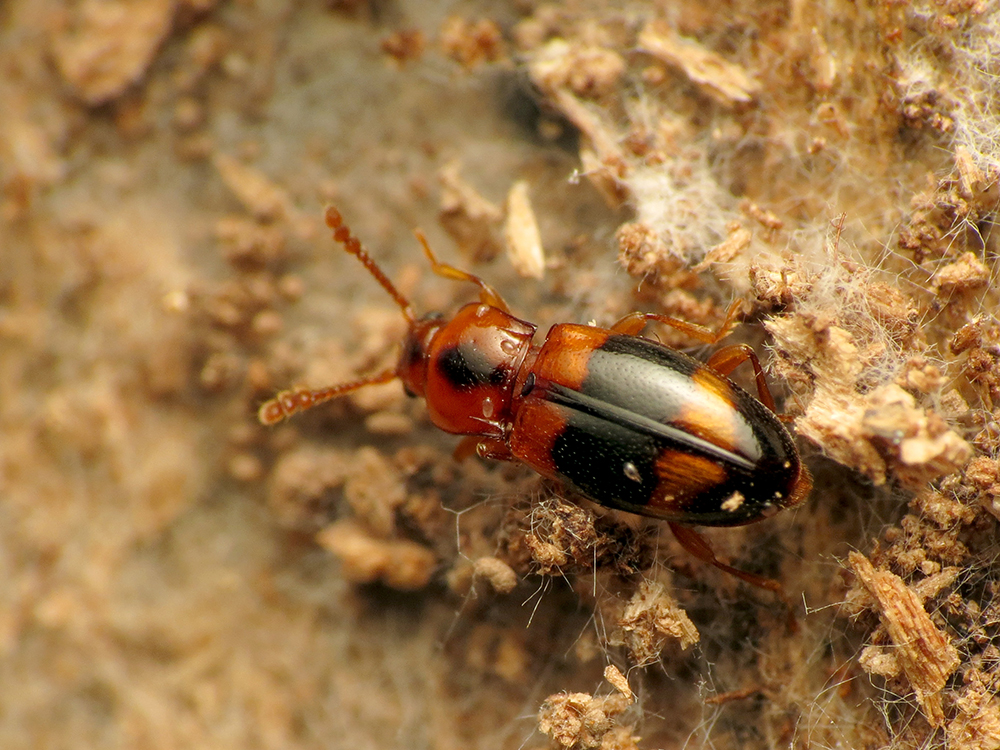
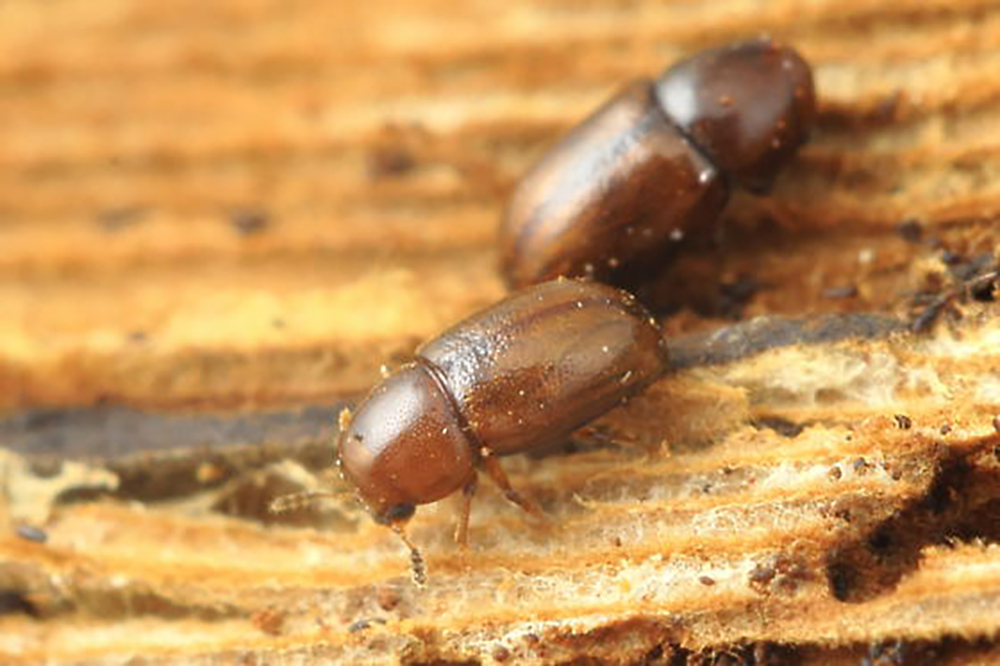
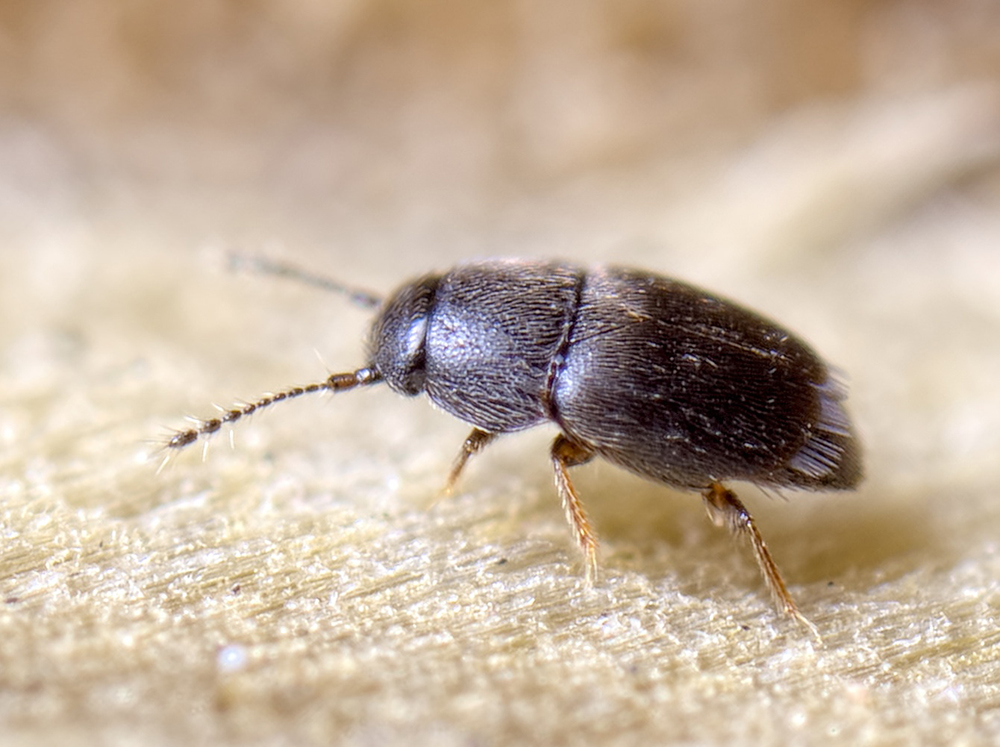
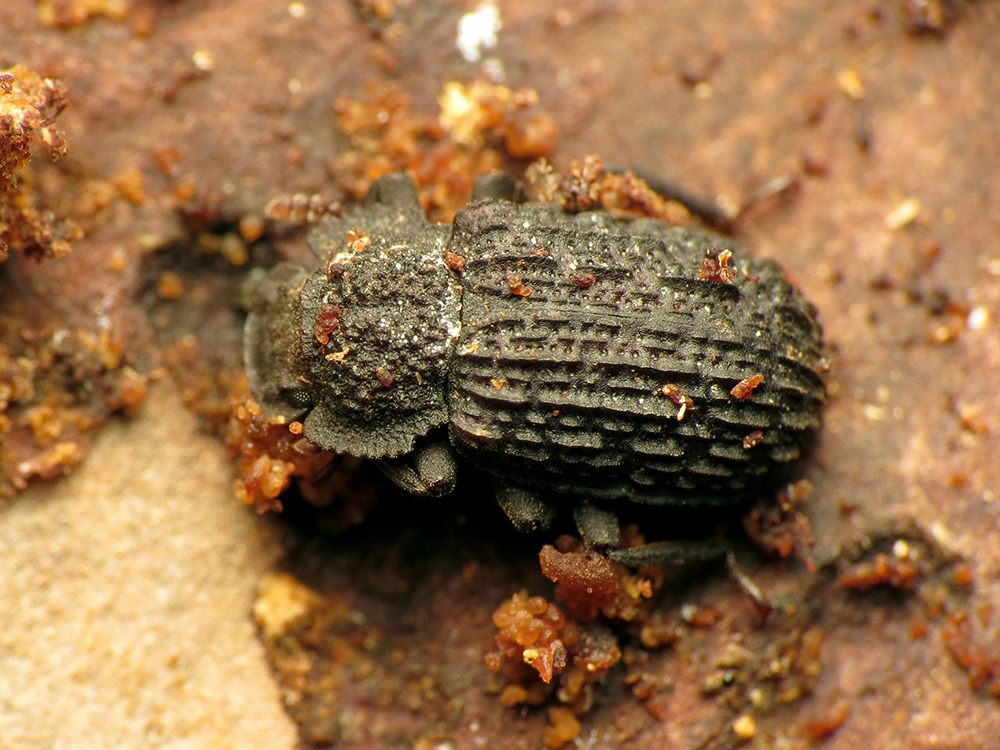
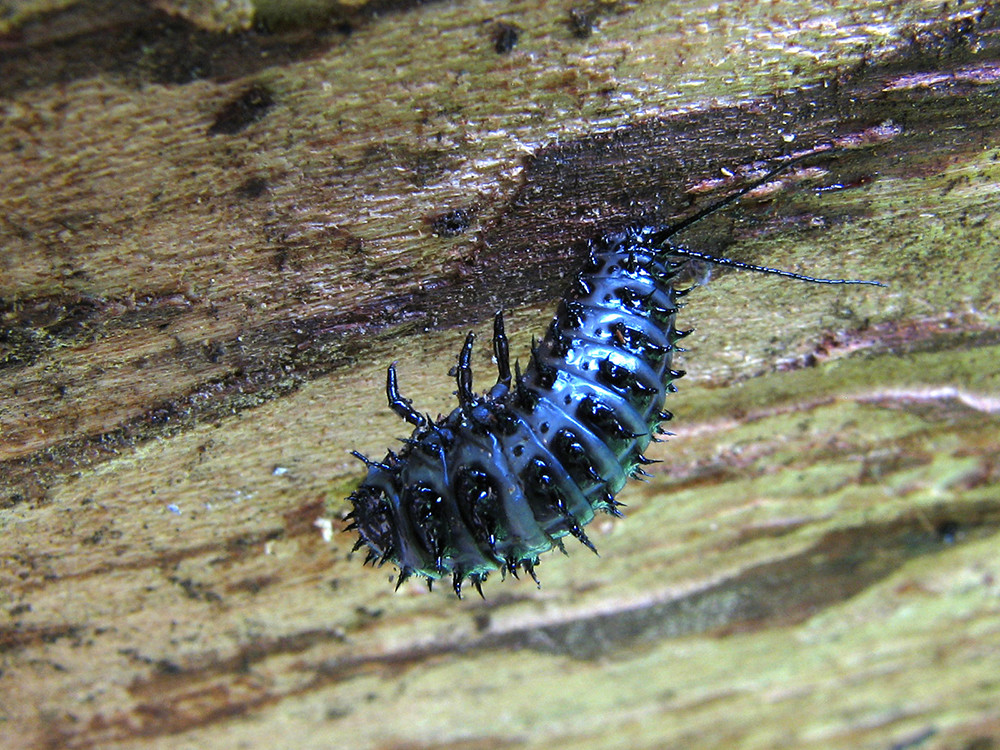
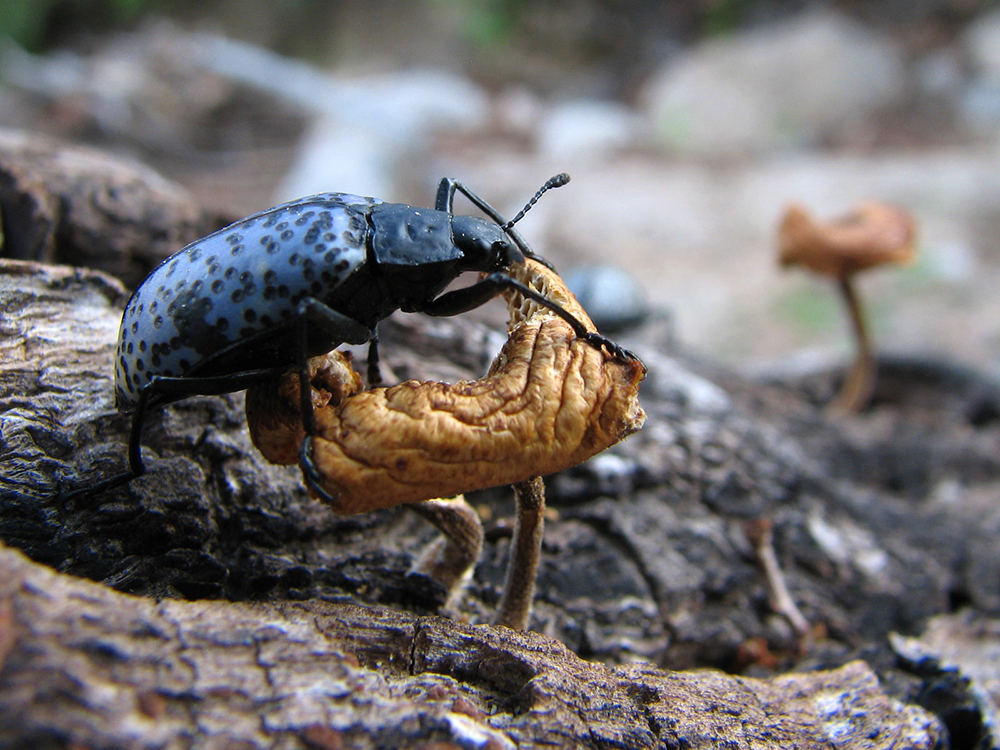
This material is based upon work that is supported by the National Institute of Food and Agriculture, U.S. Department of Agriculture through the Sustainable Agriculture Research and Education (SARE) program. Any opinions, findings, conclusions, or recommendations expressed in this publication are those of the author(s) and do not necessarily reflect the view of the U.S. Department of Agriculture or SARE.
